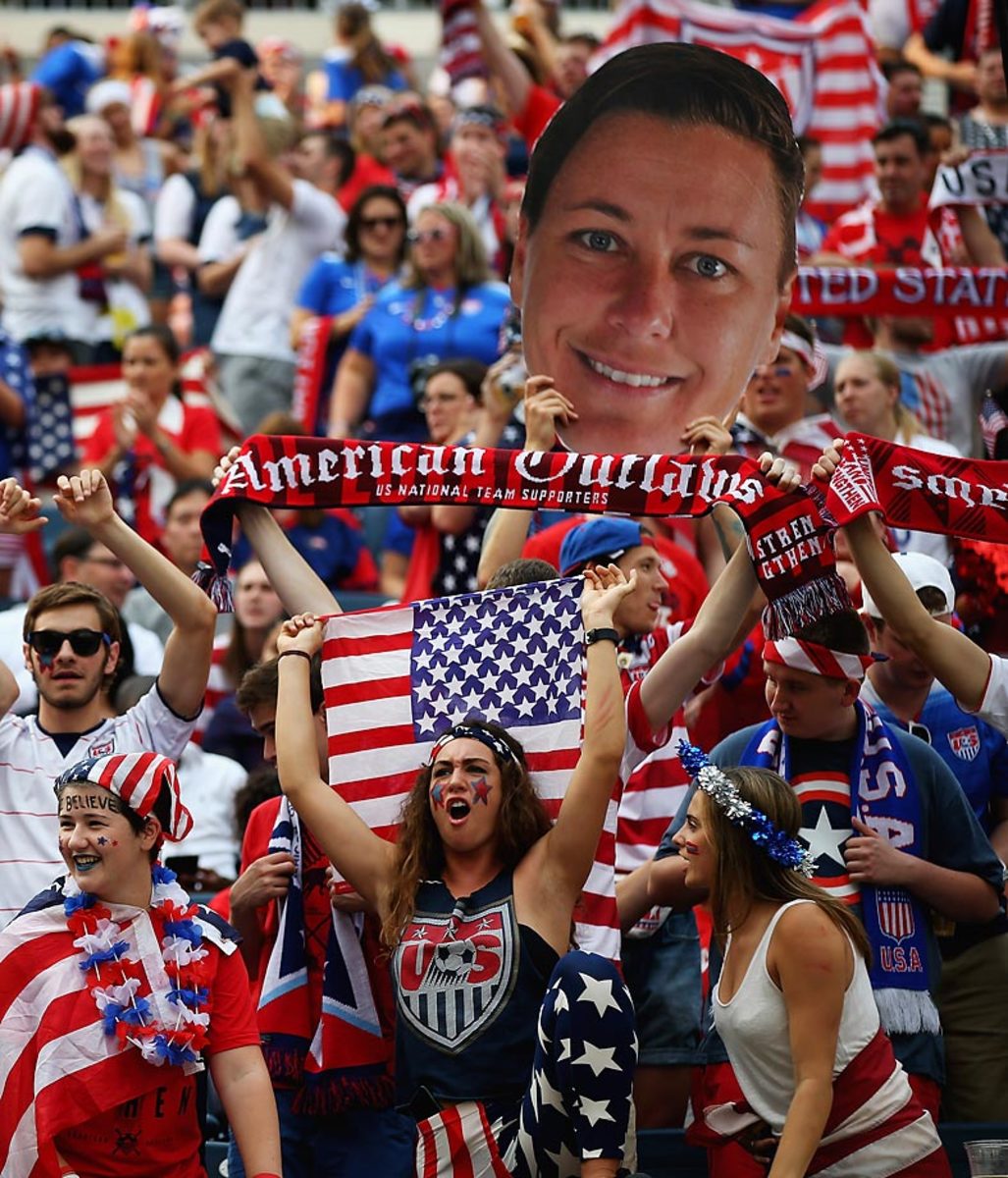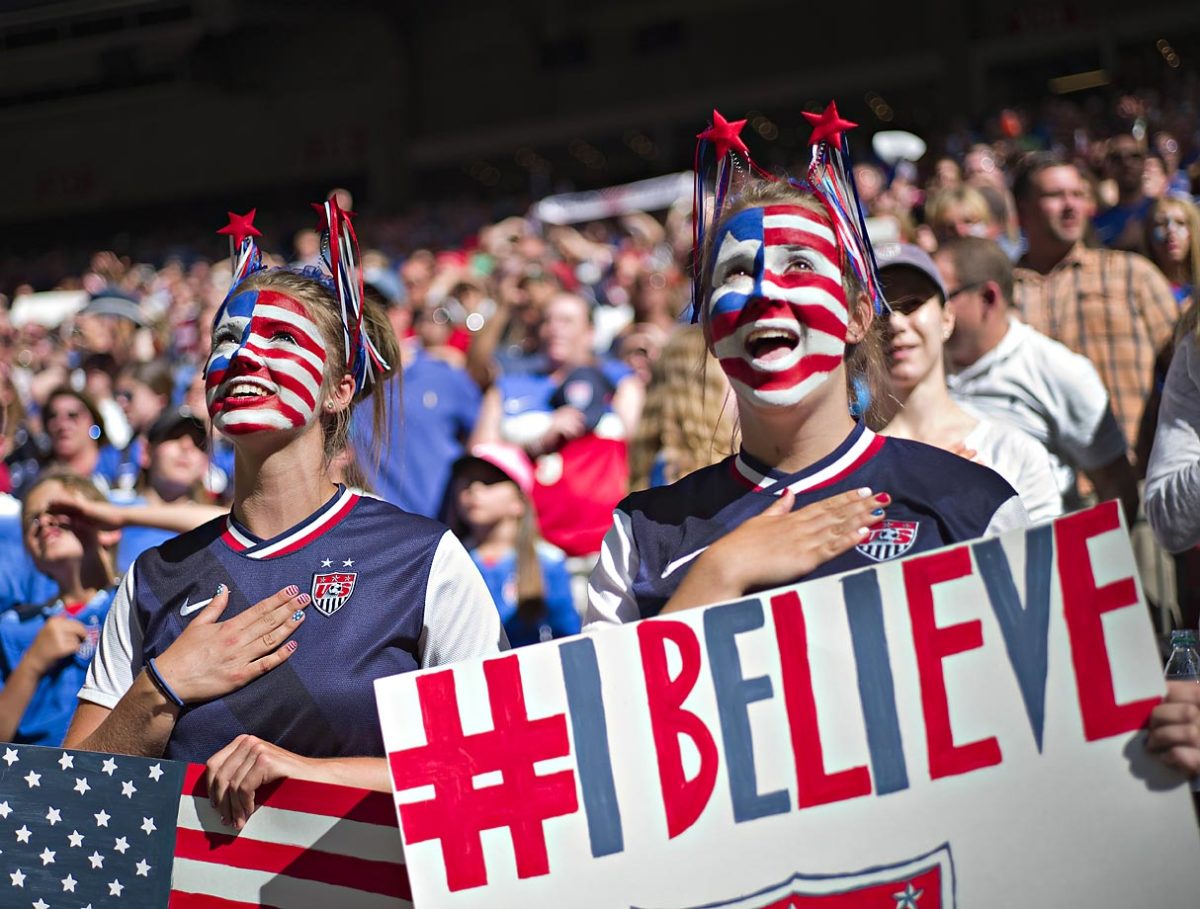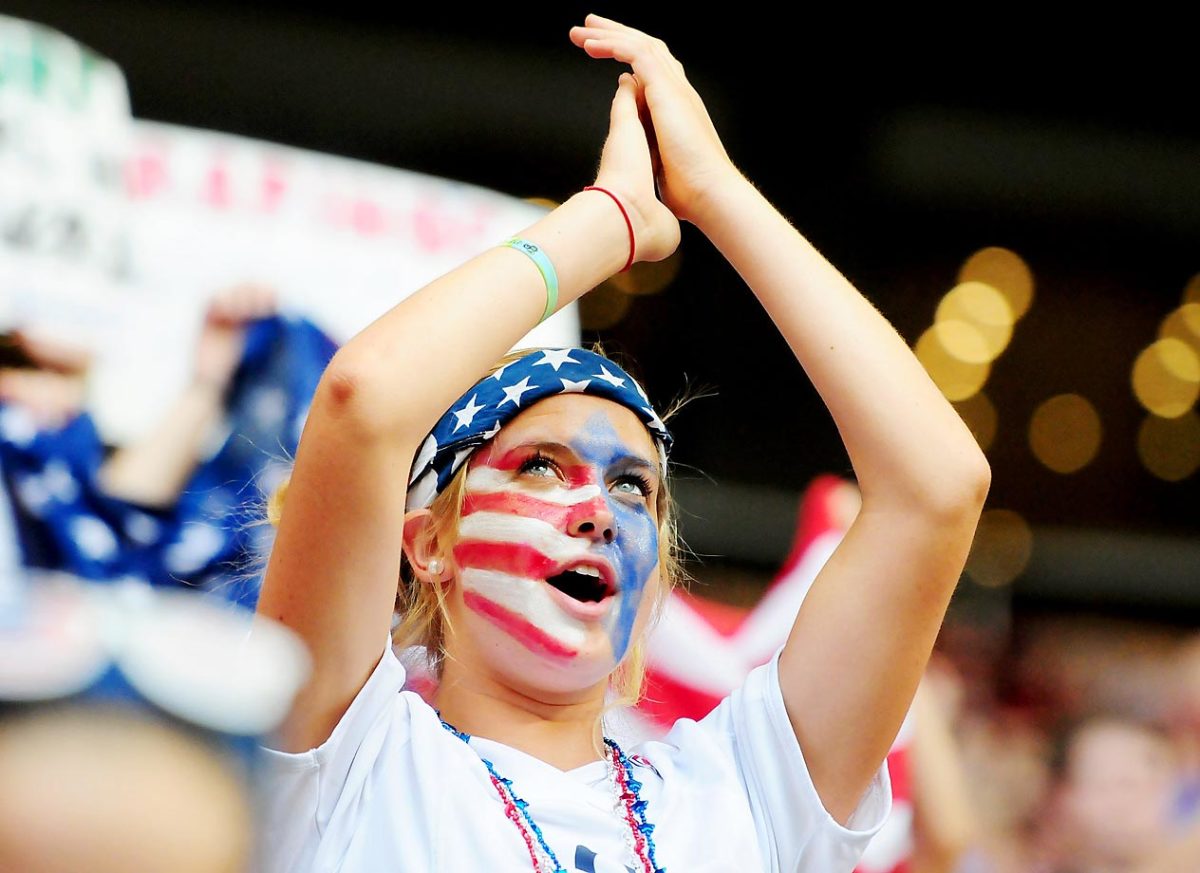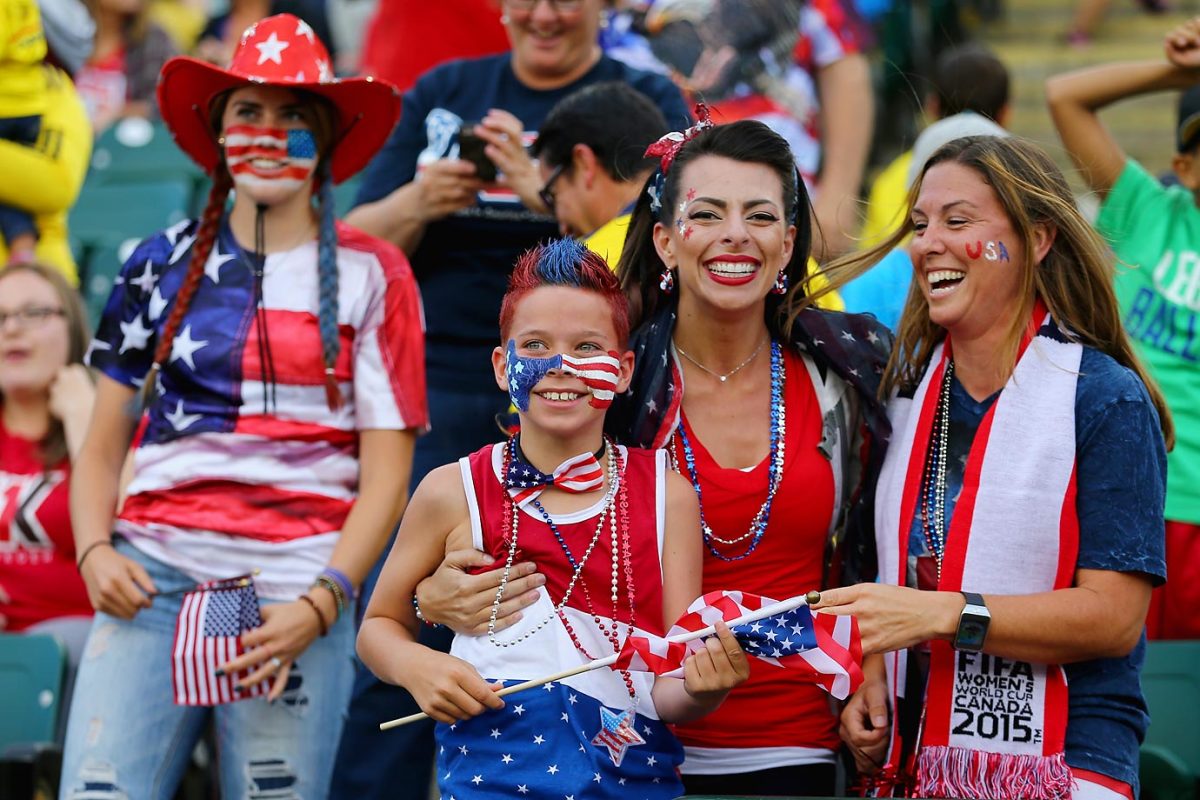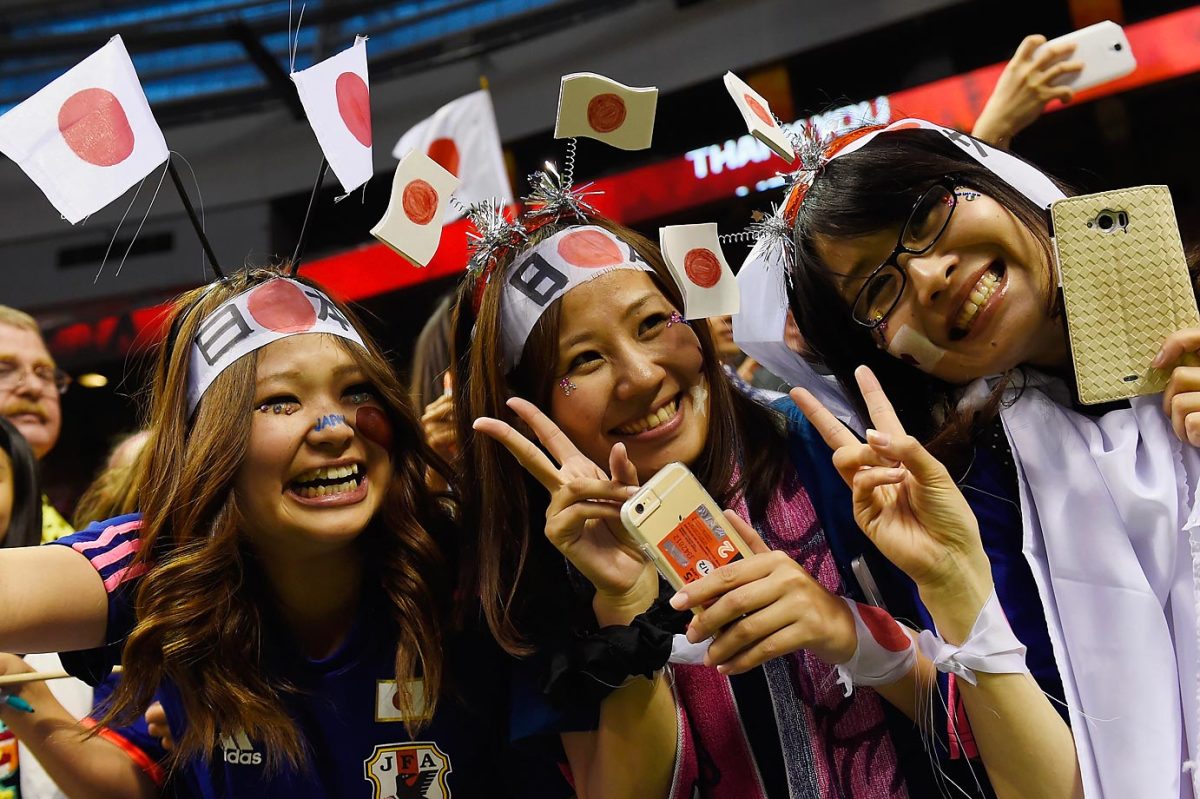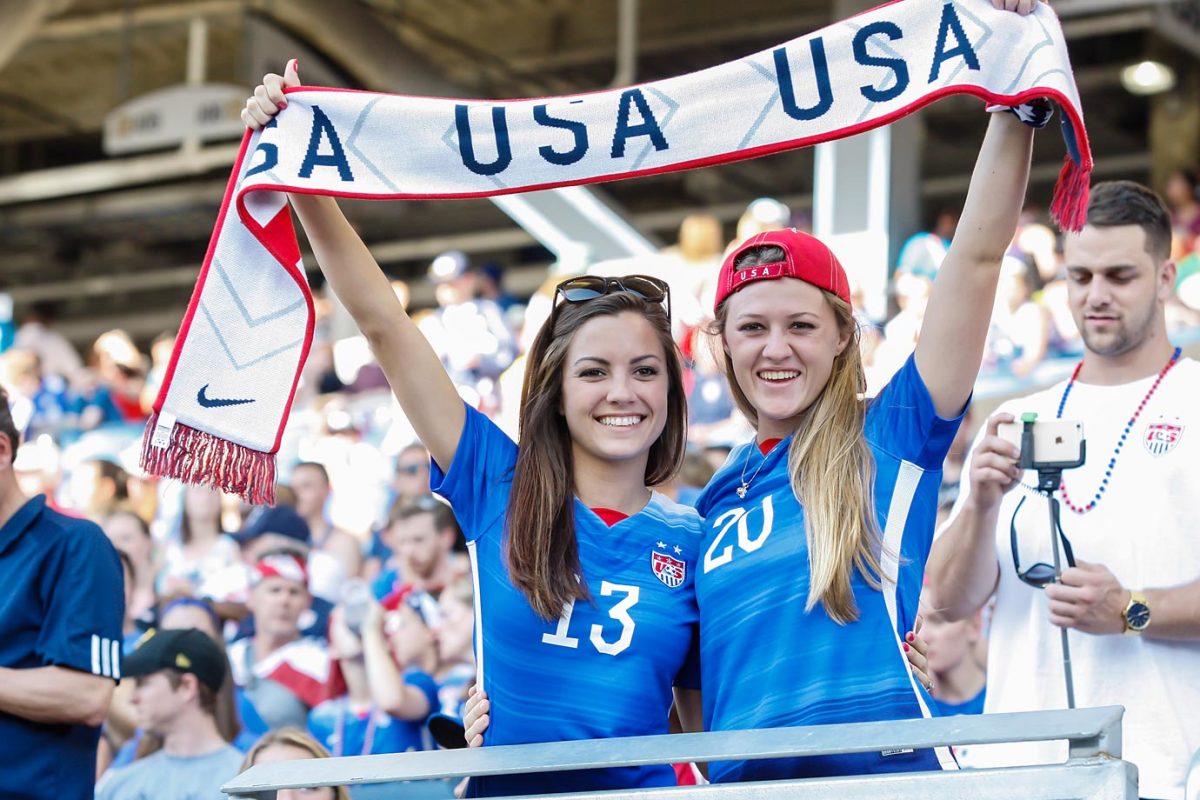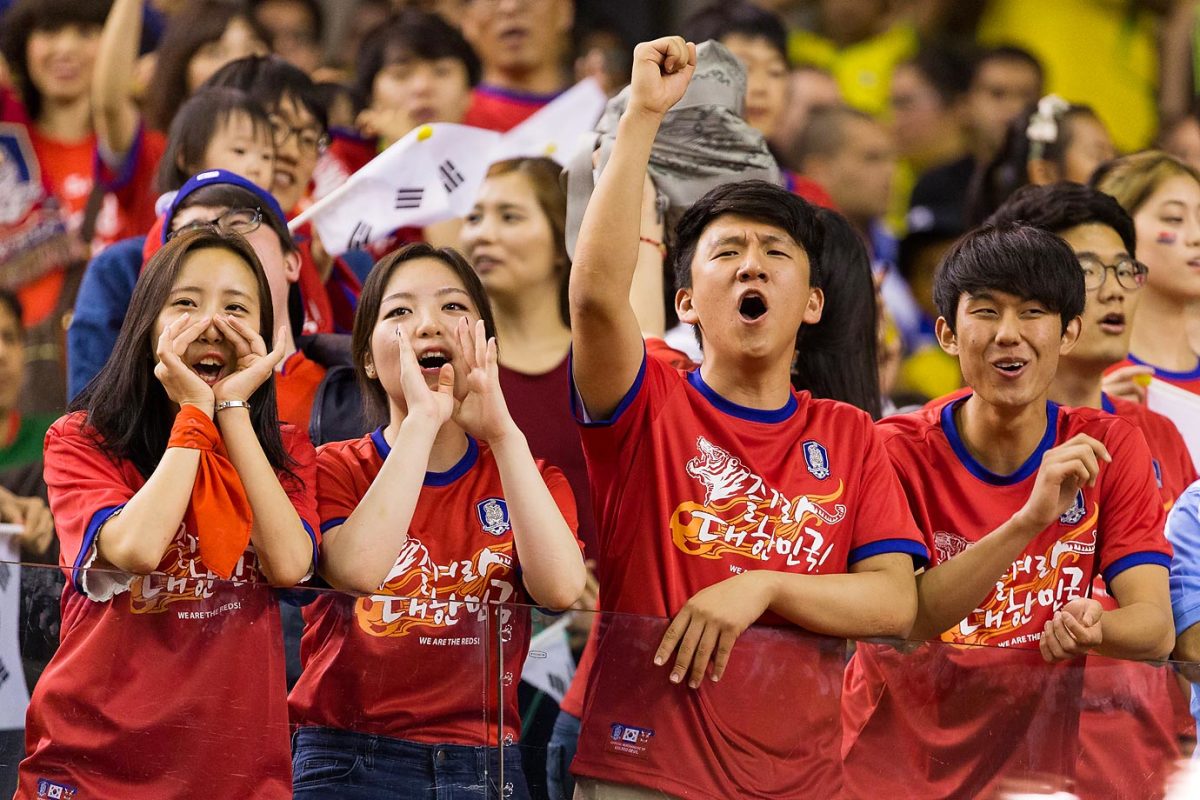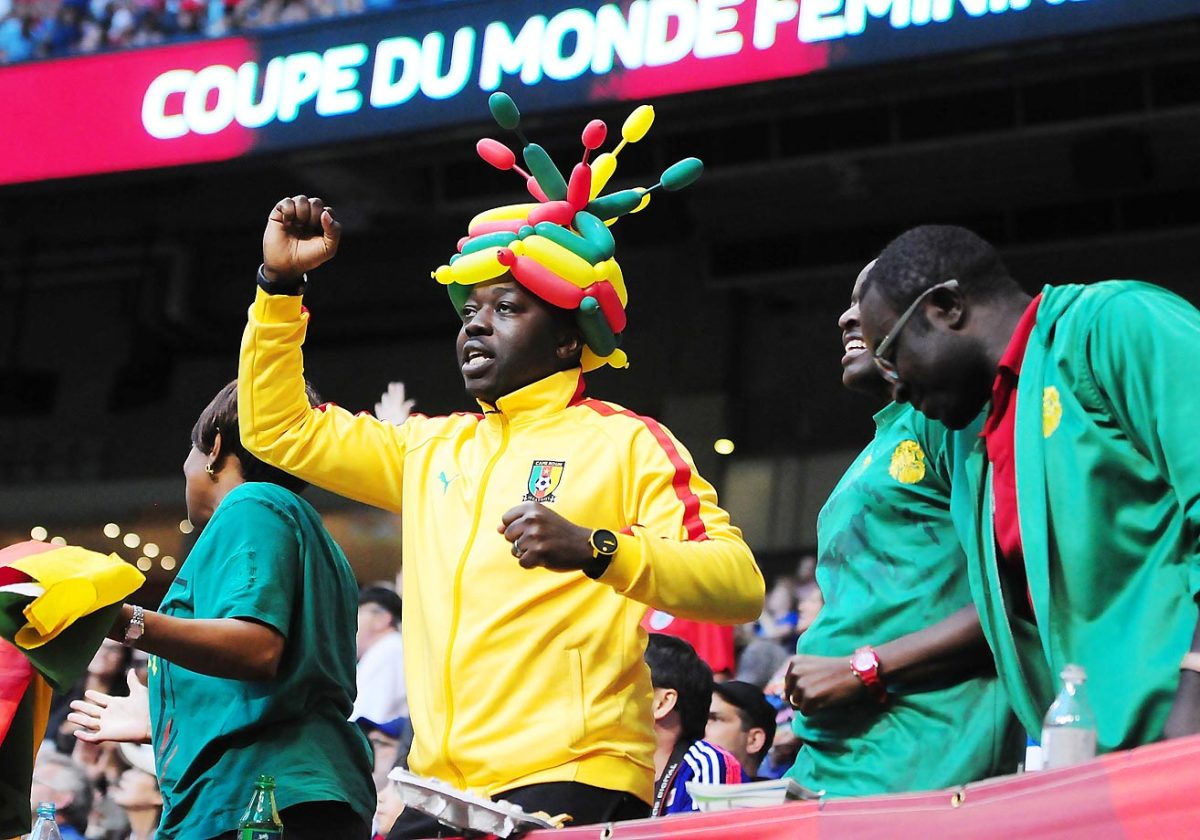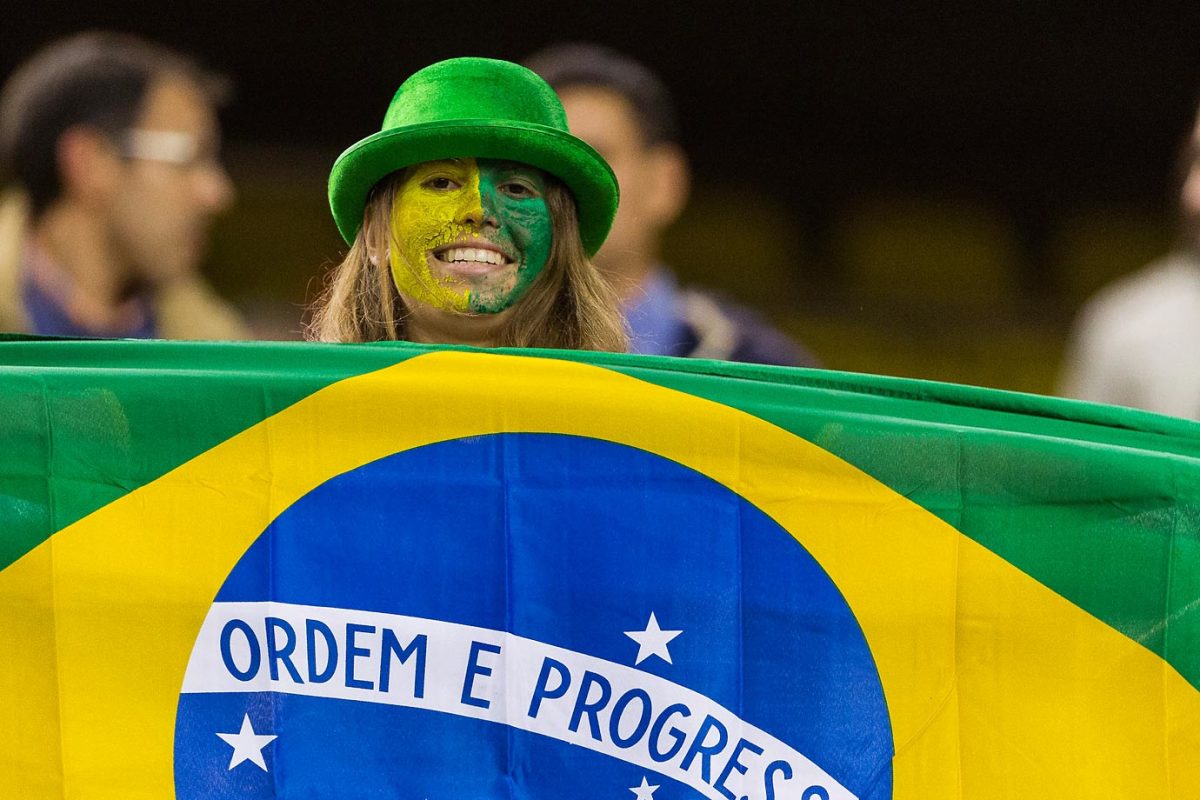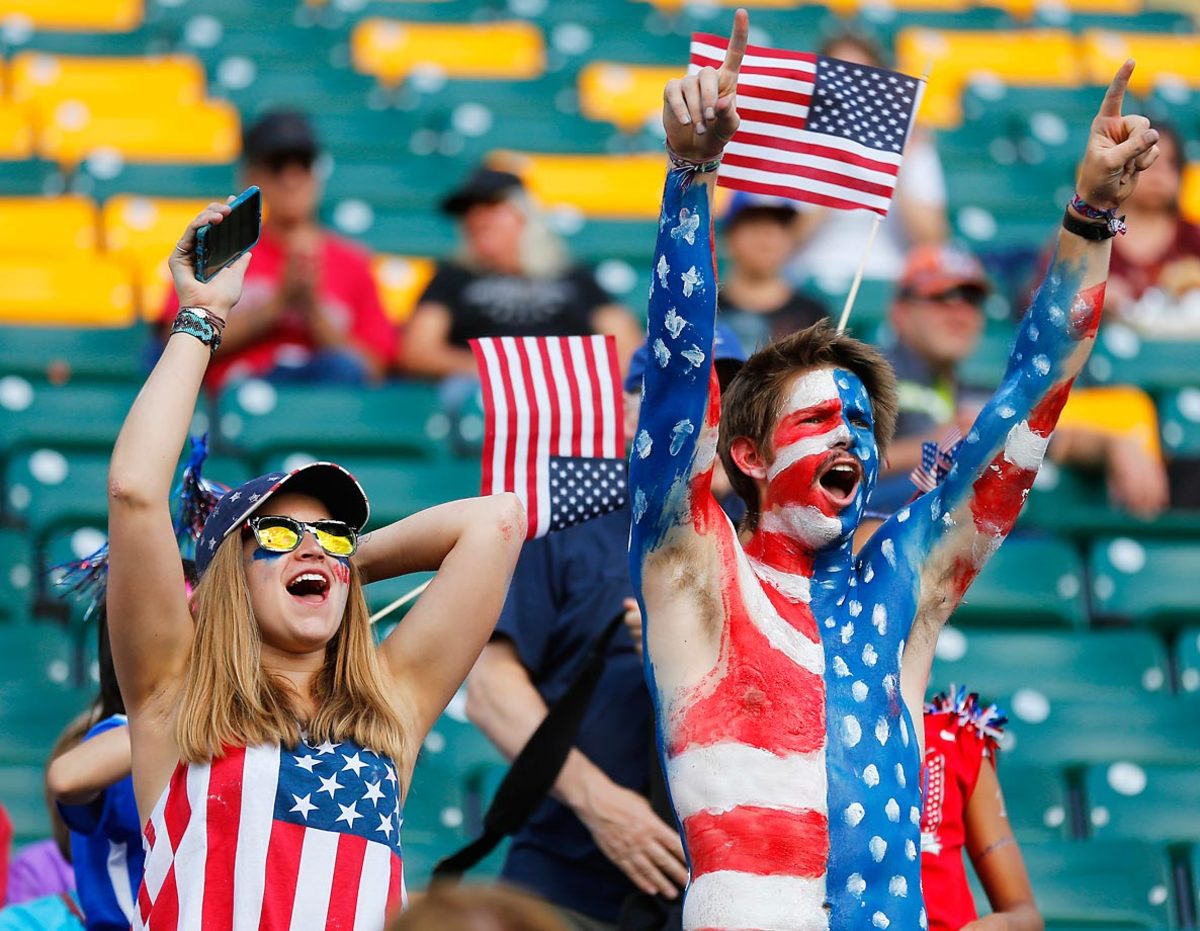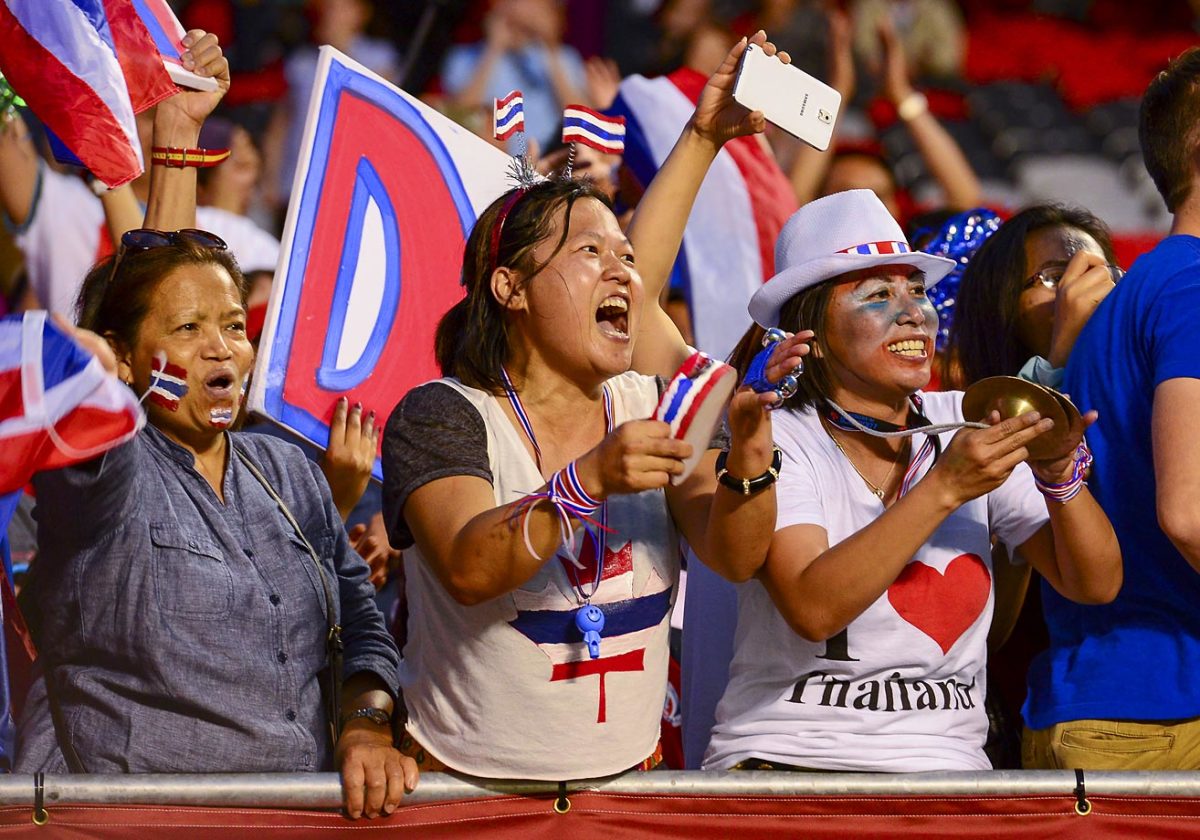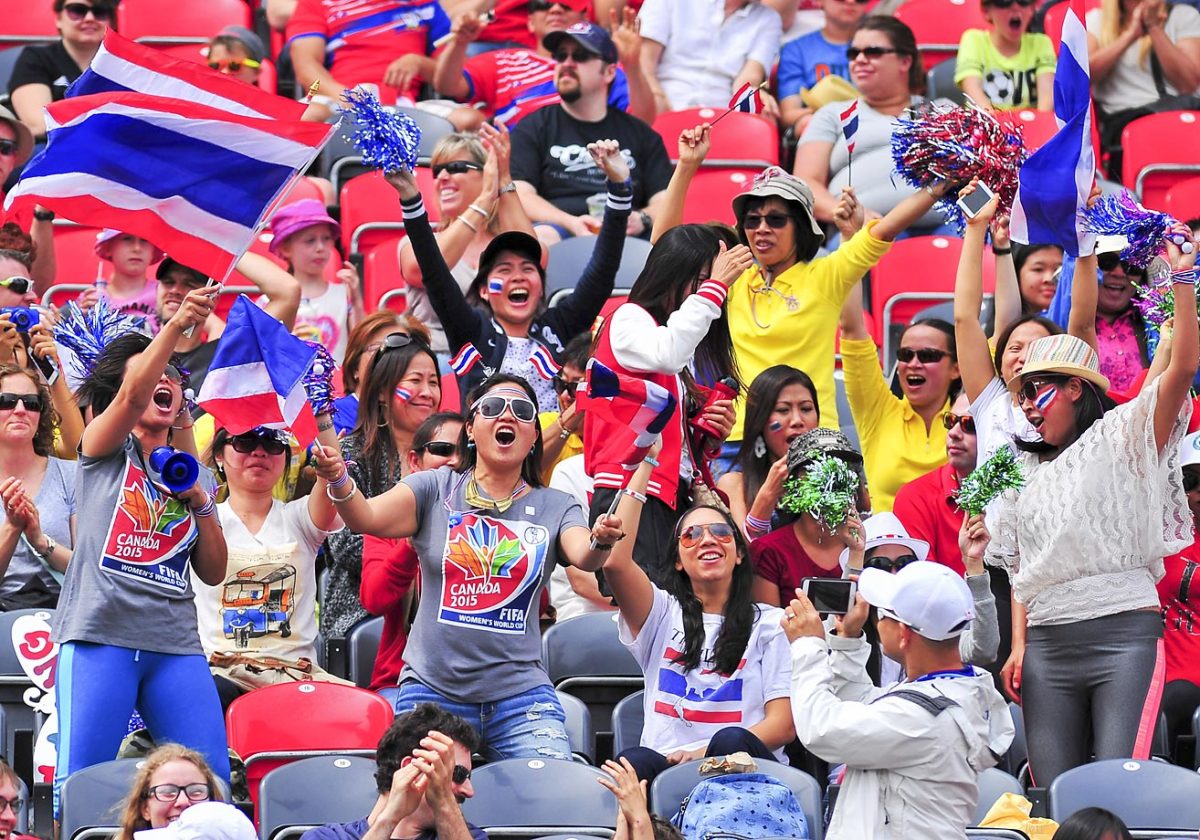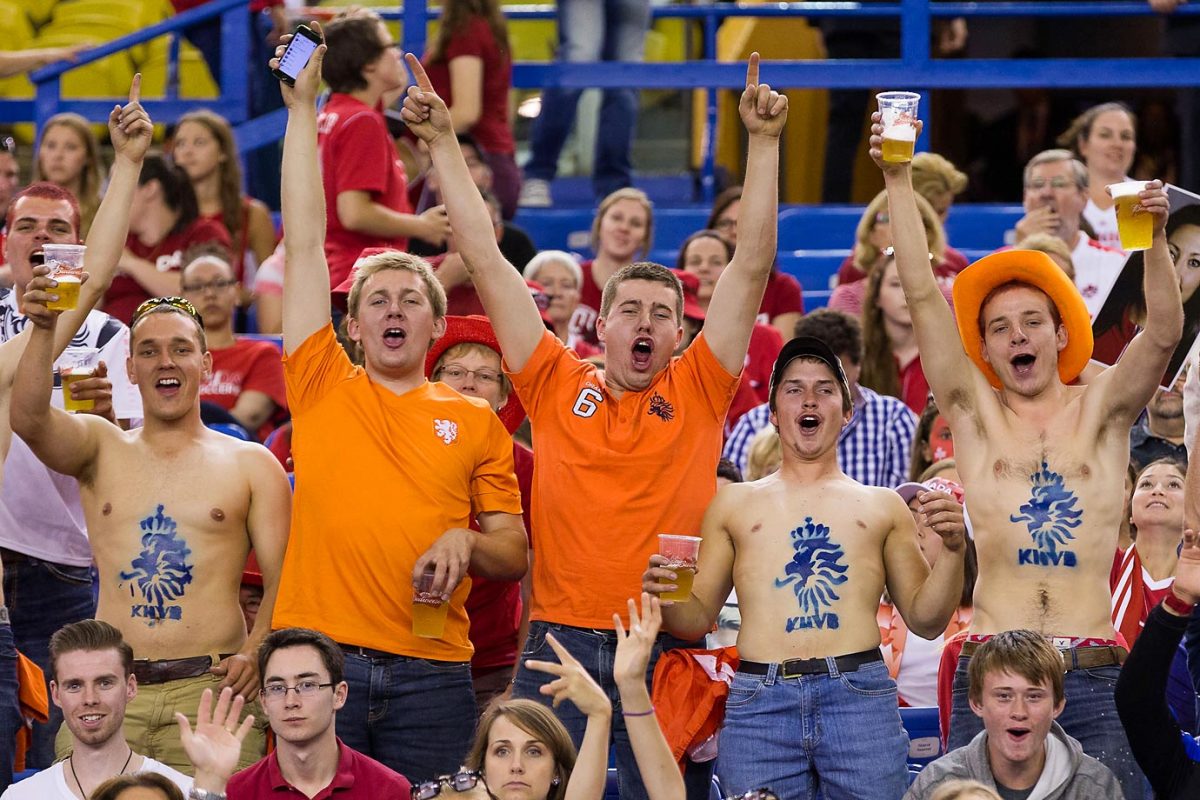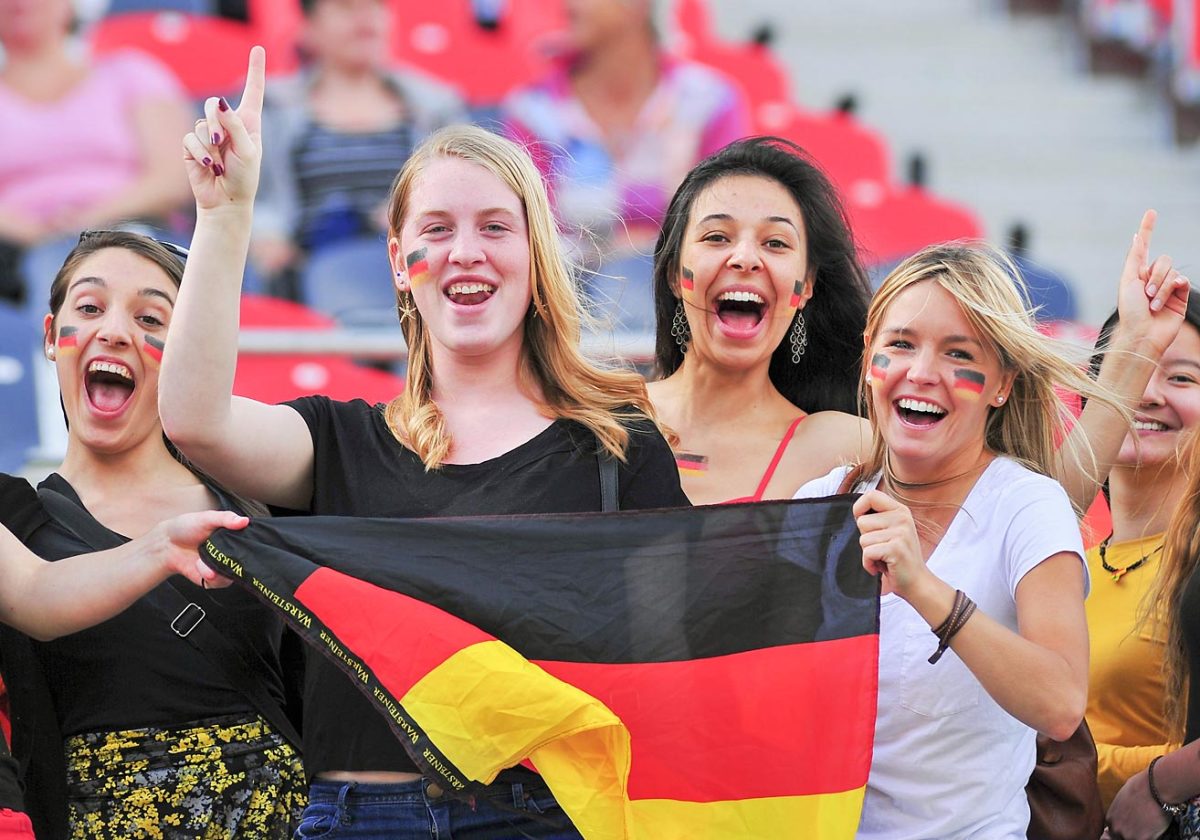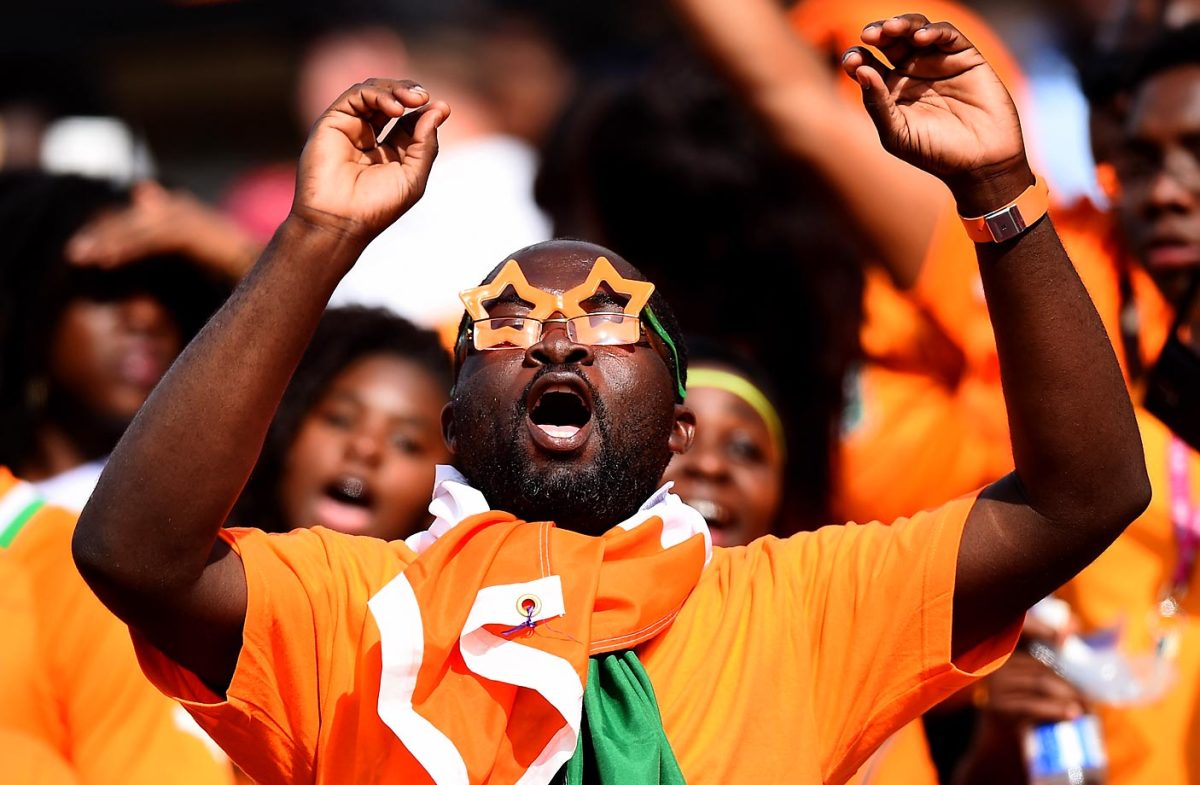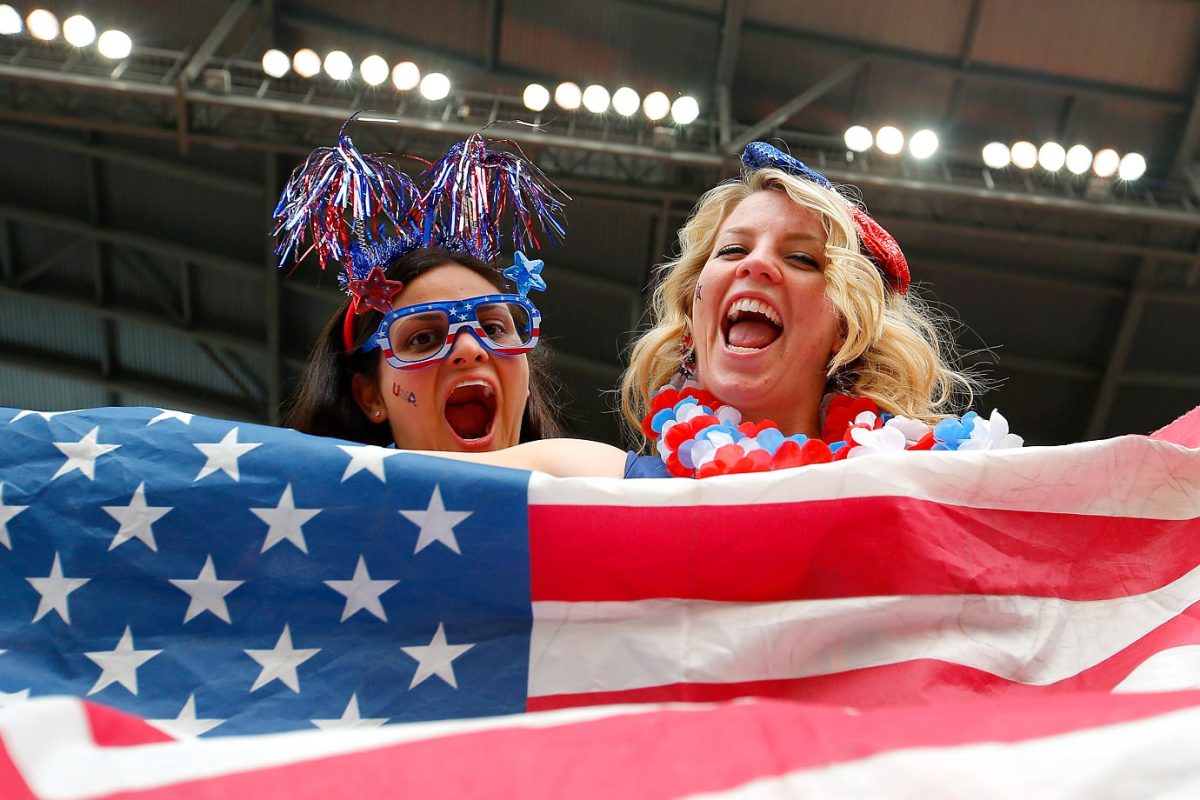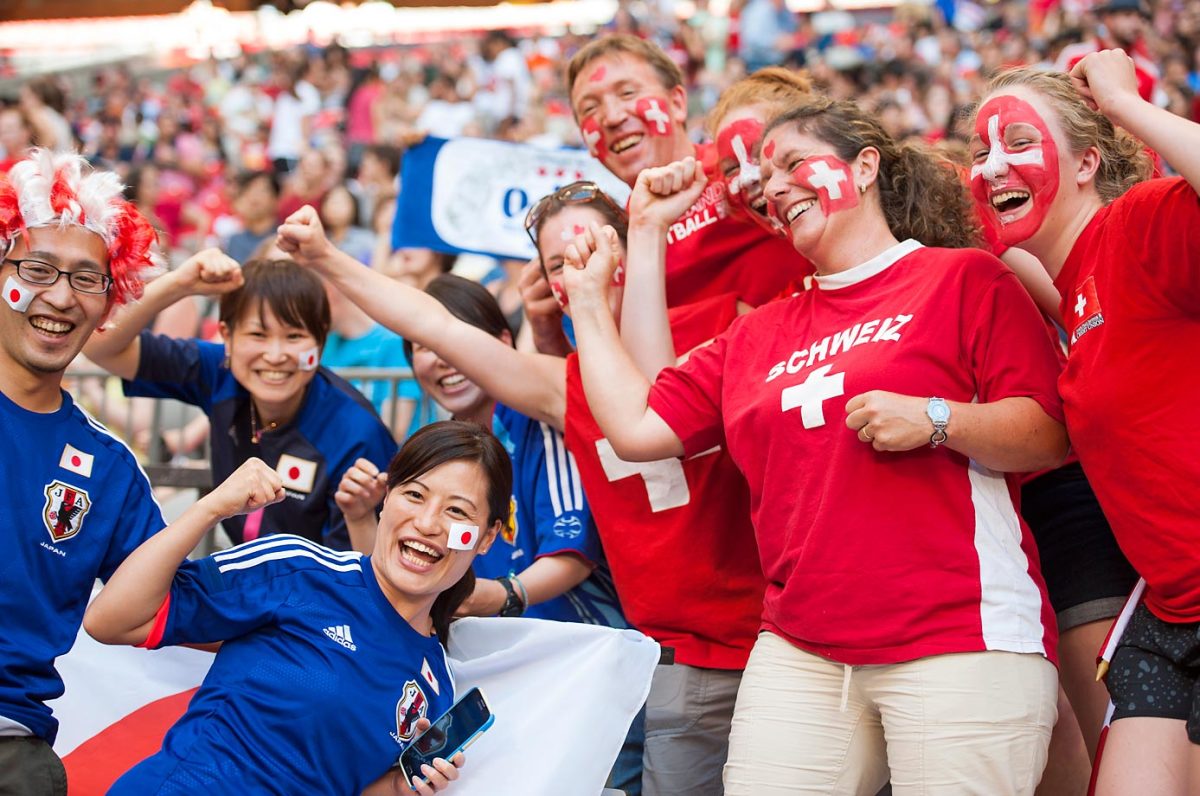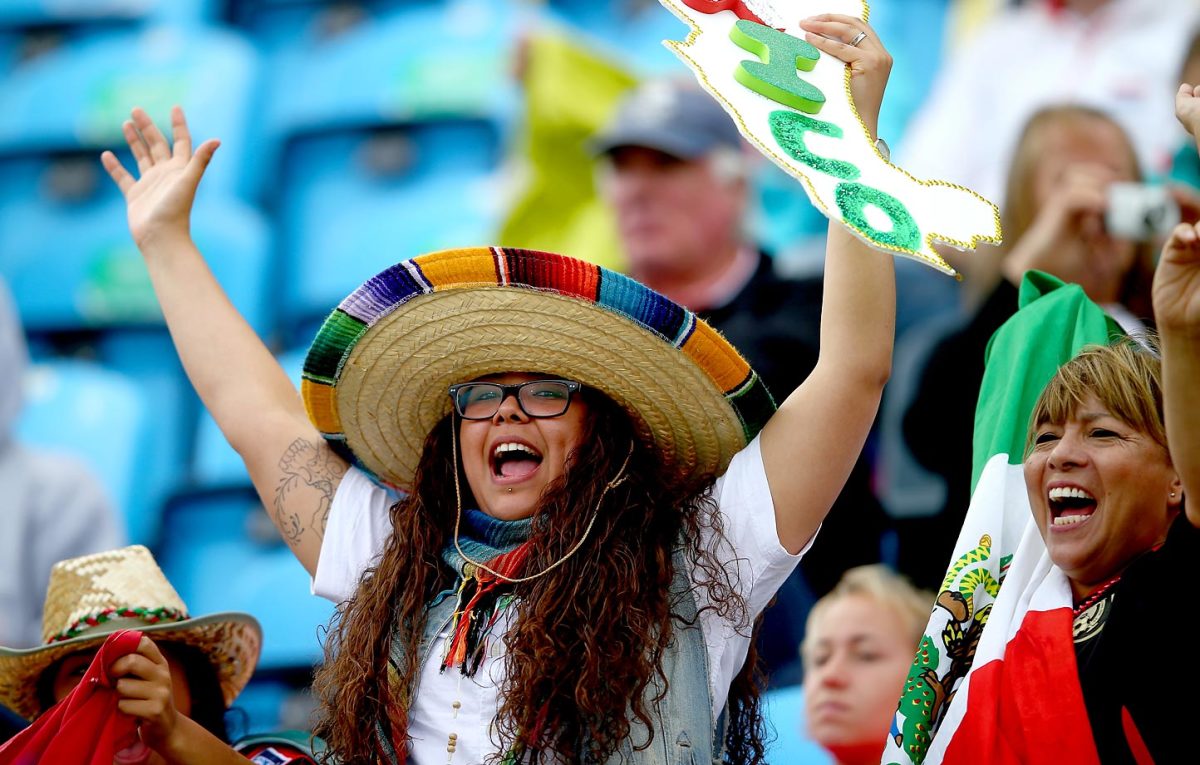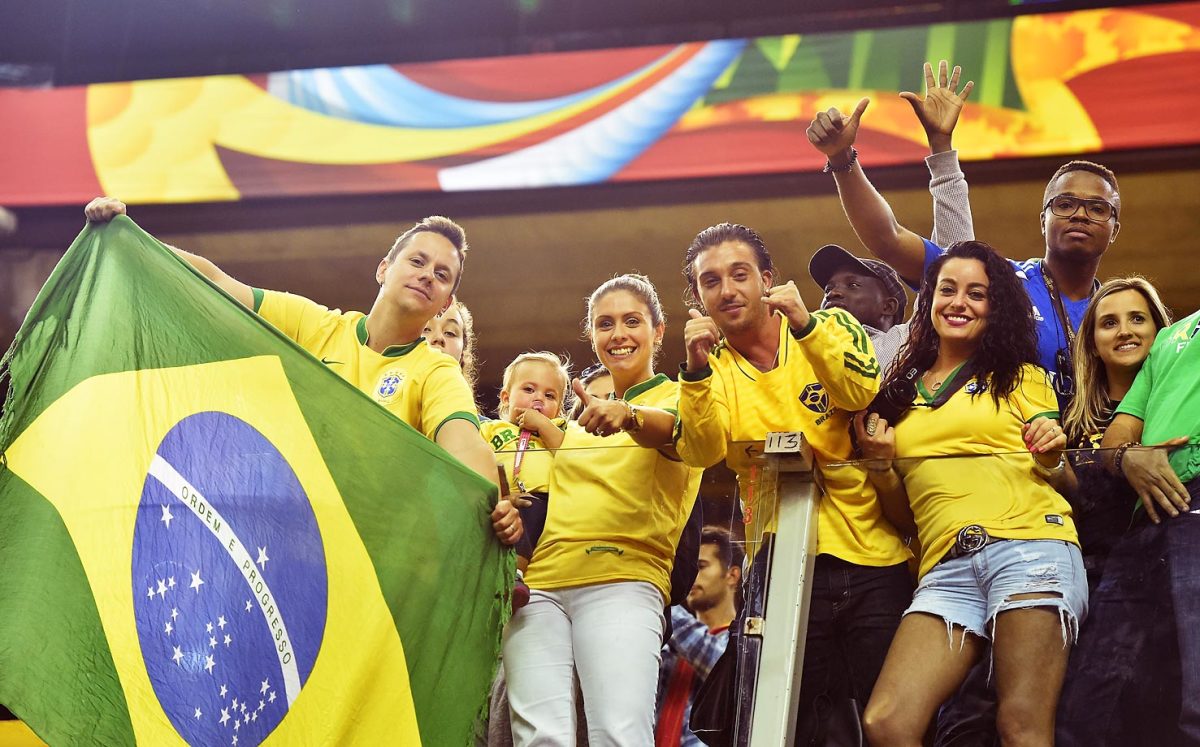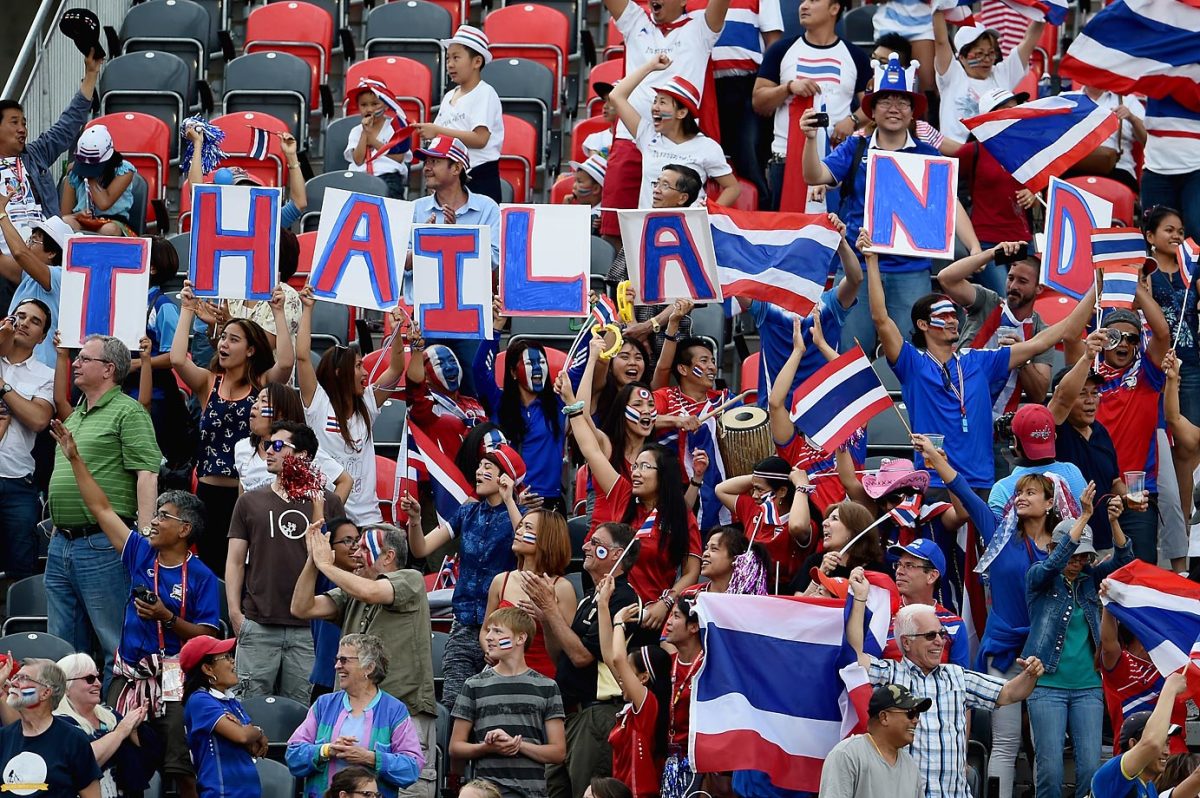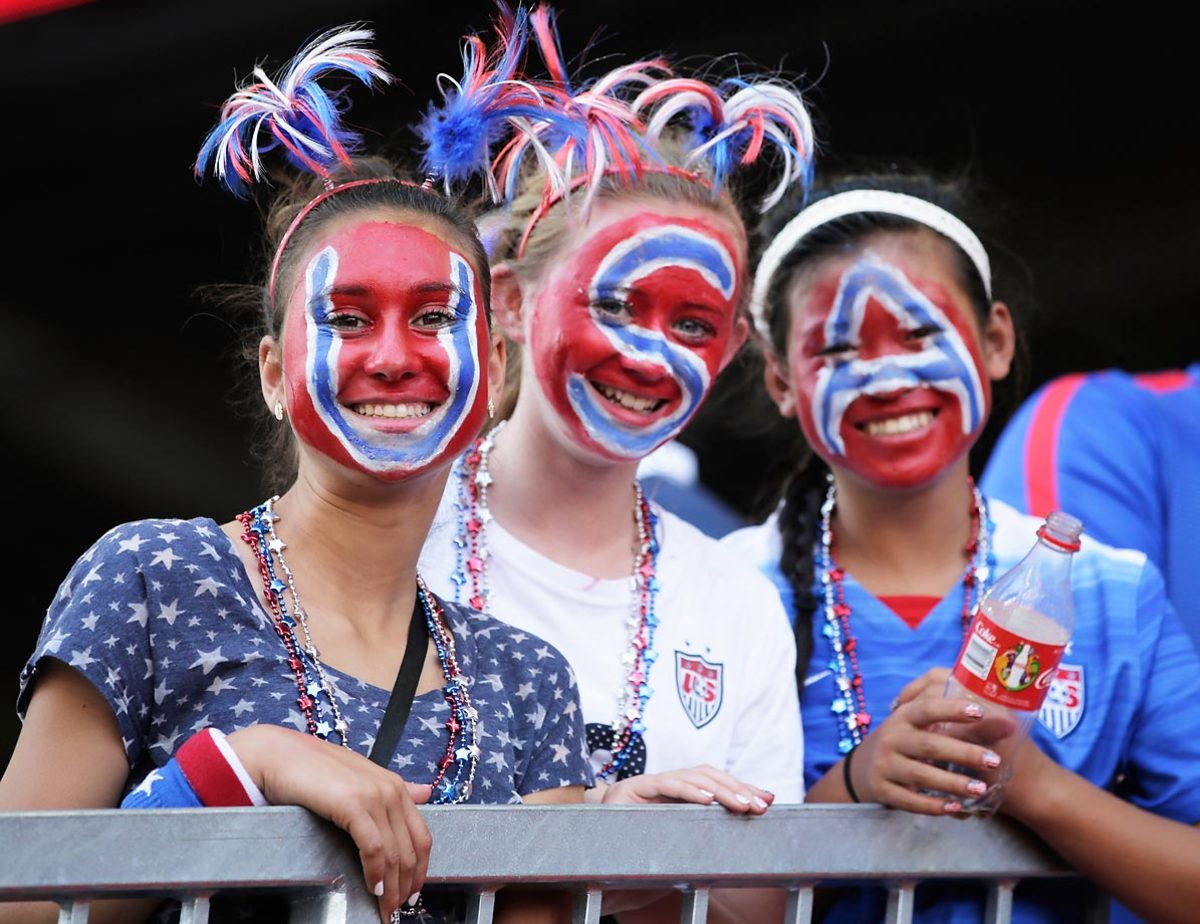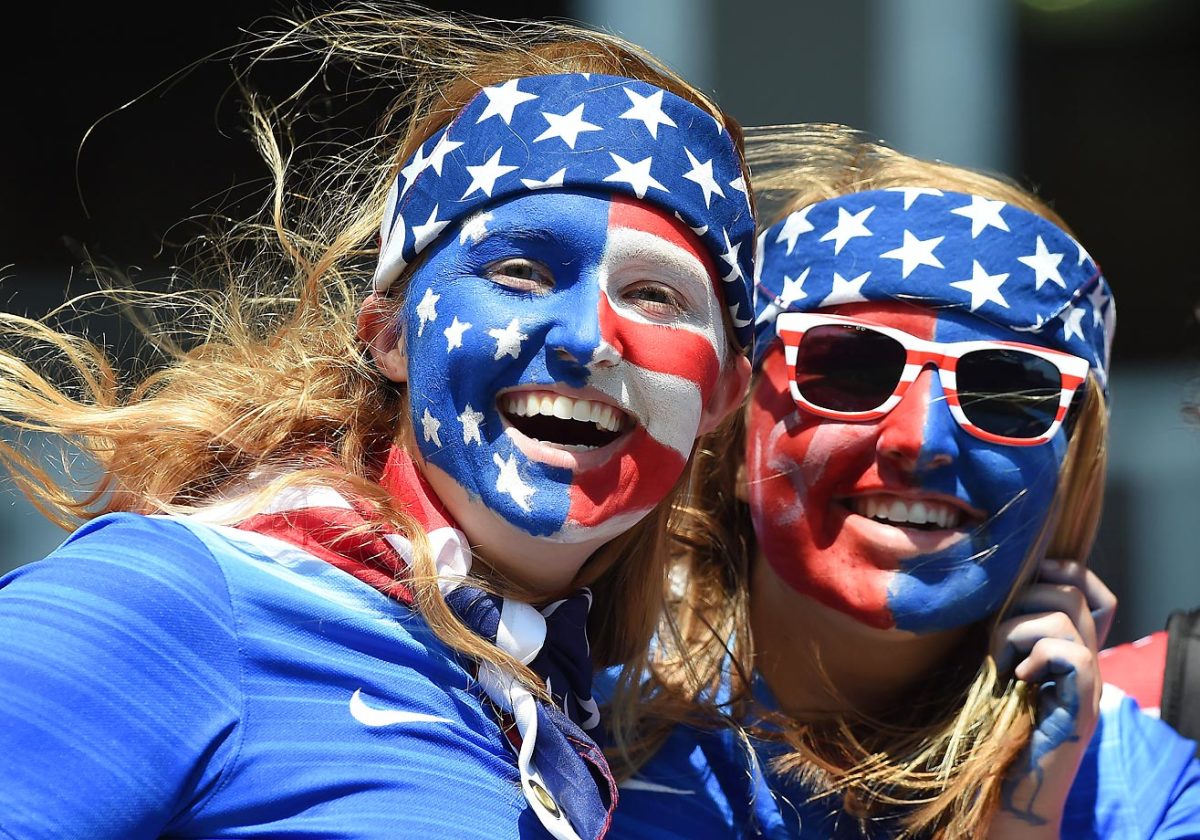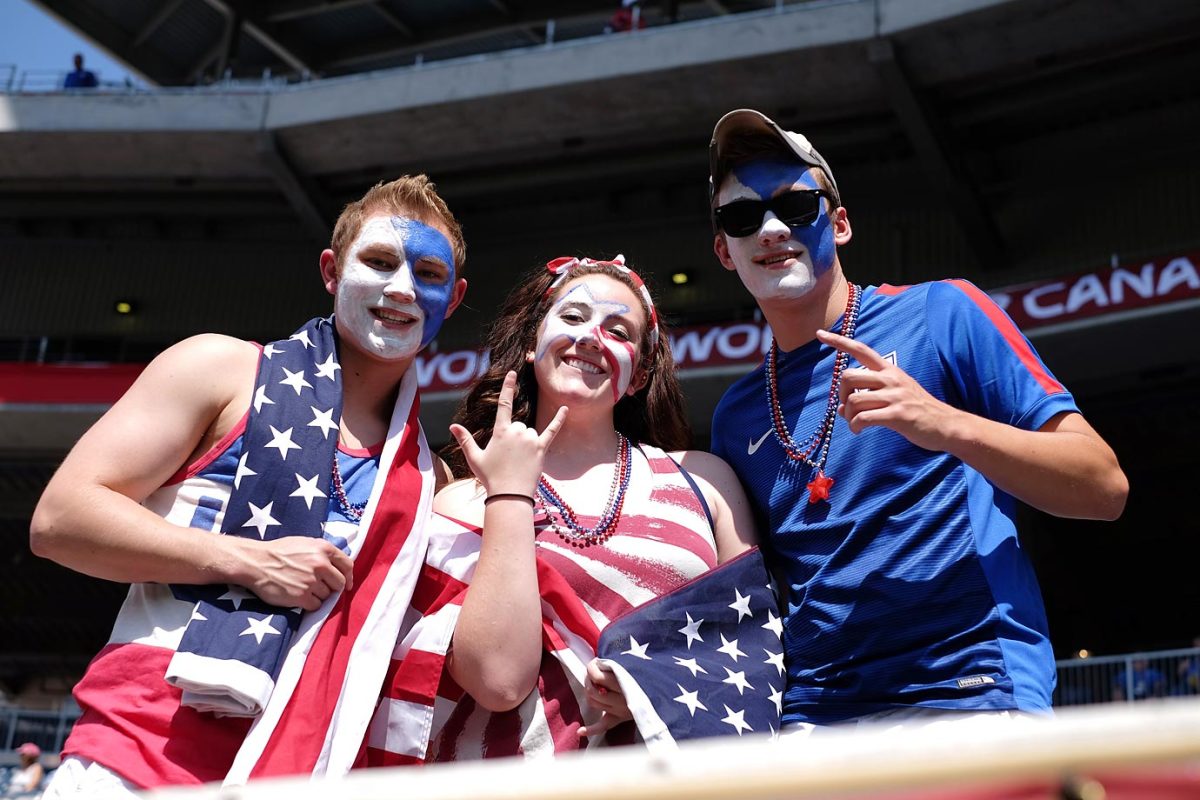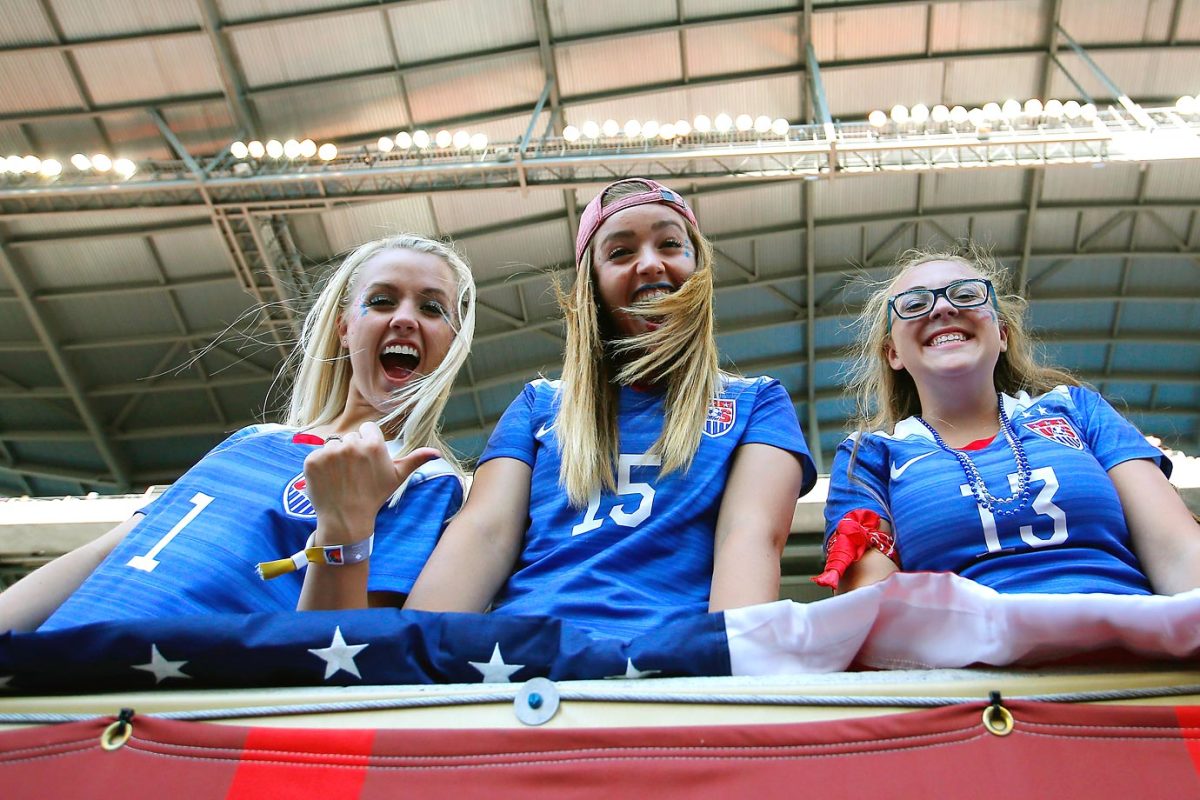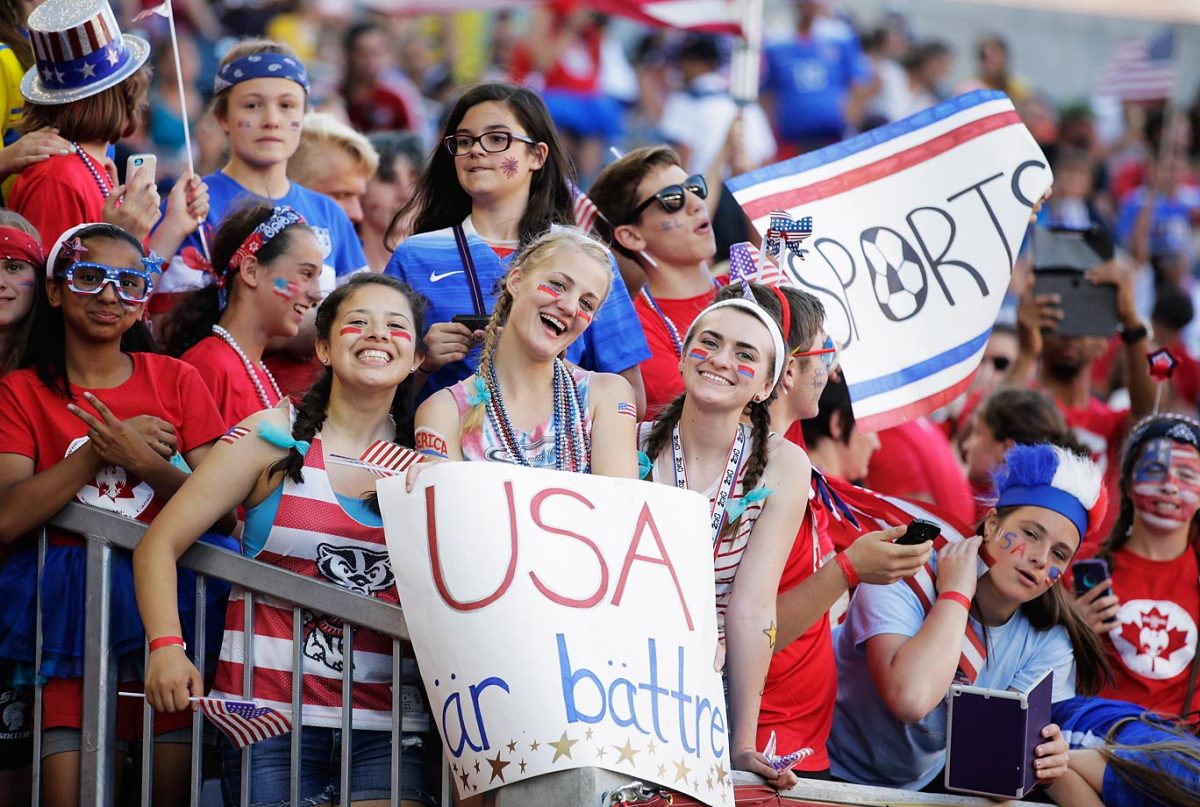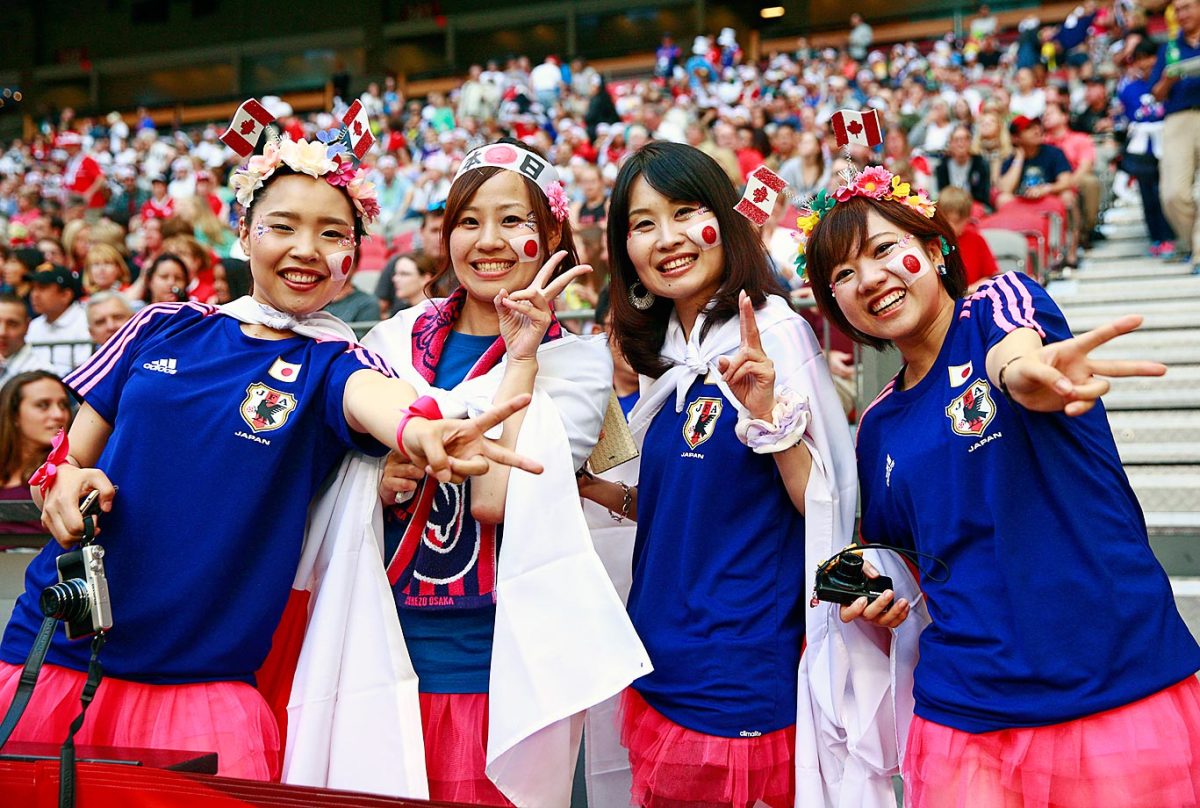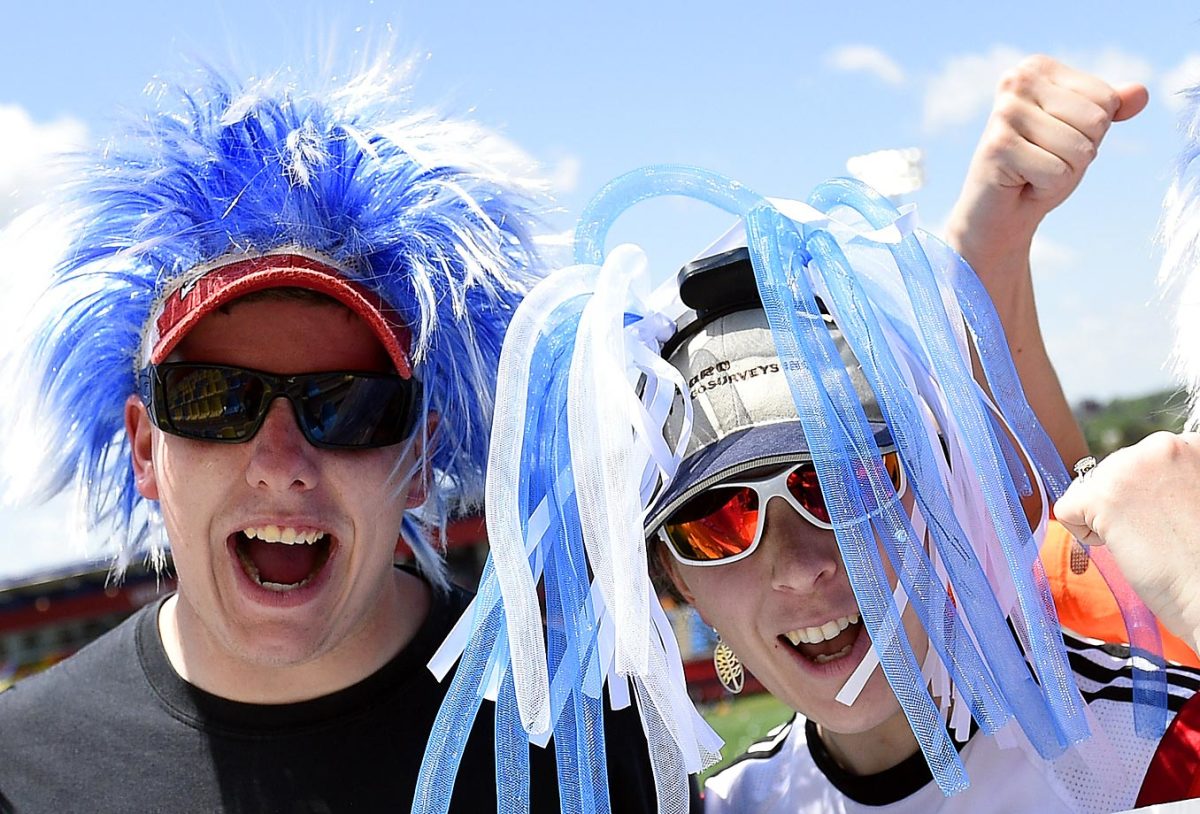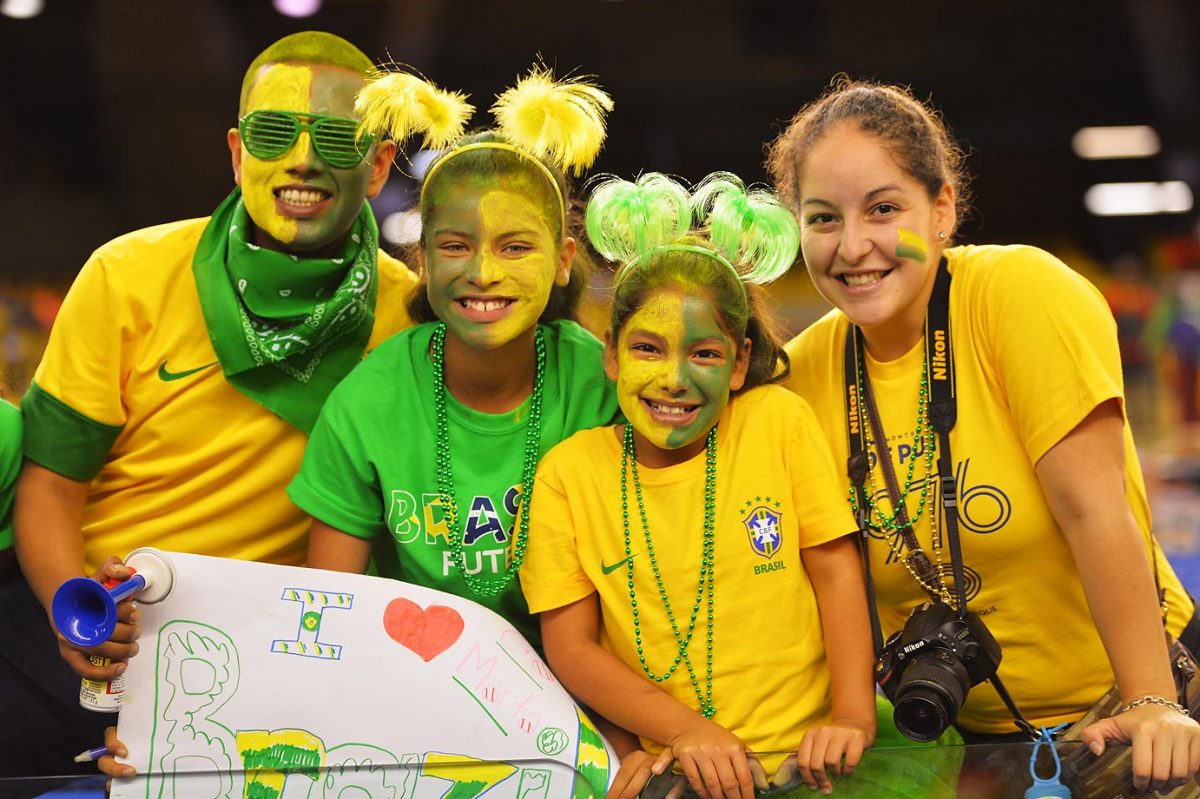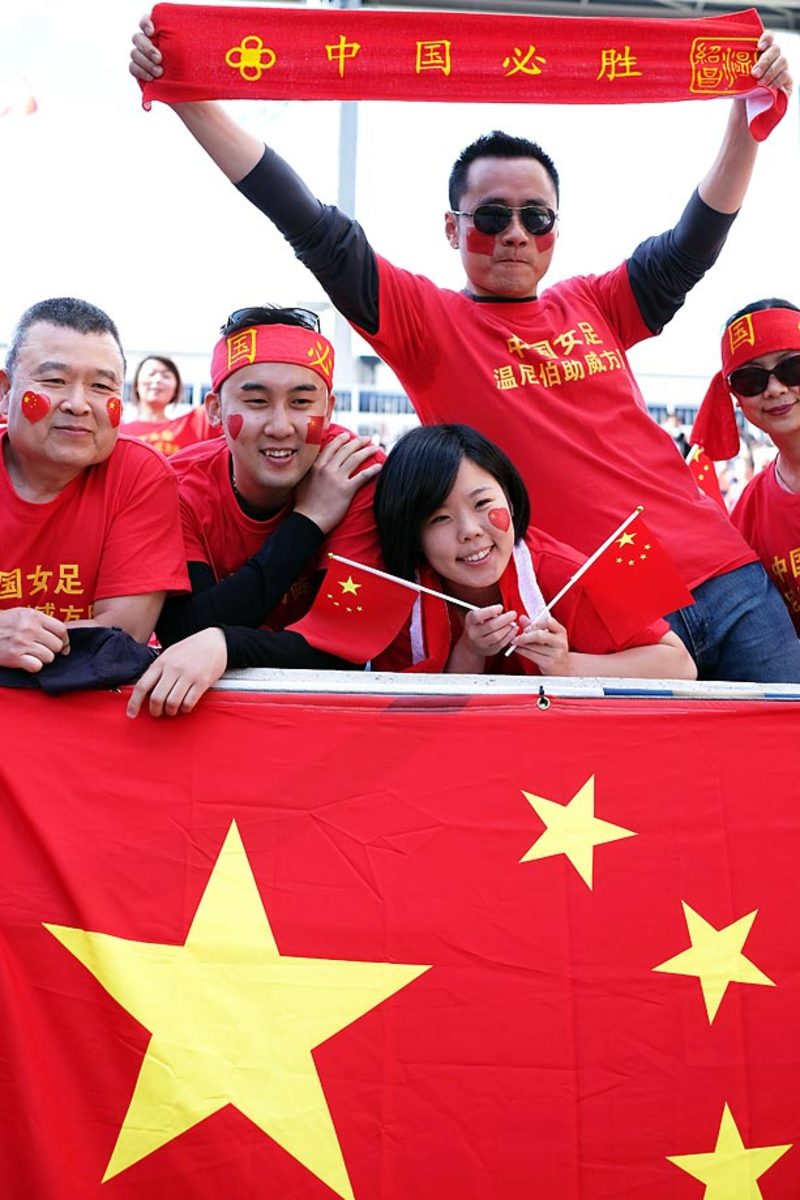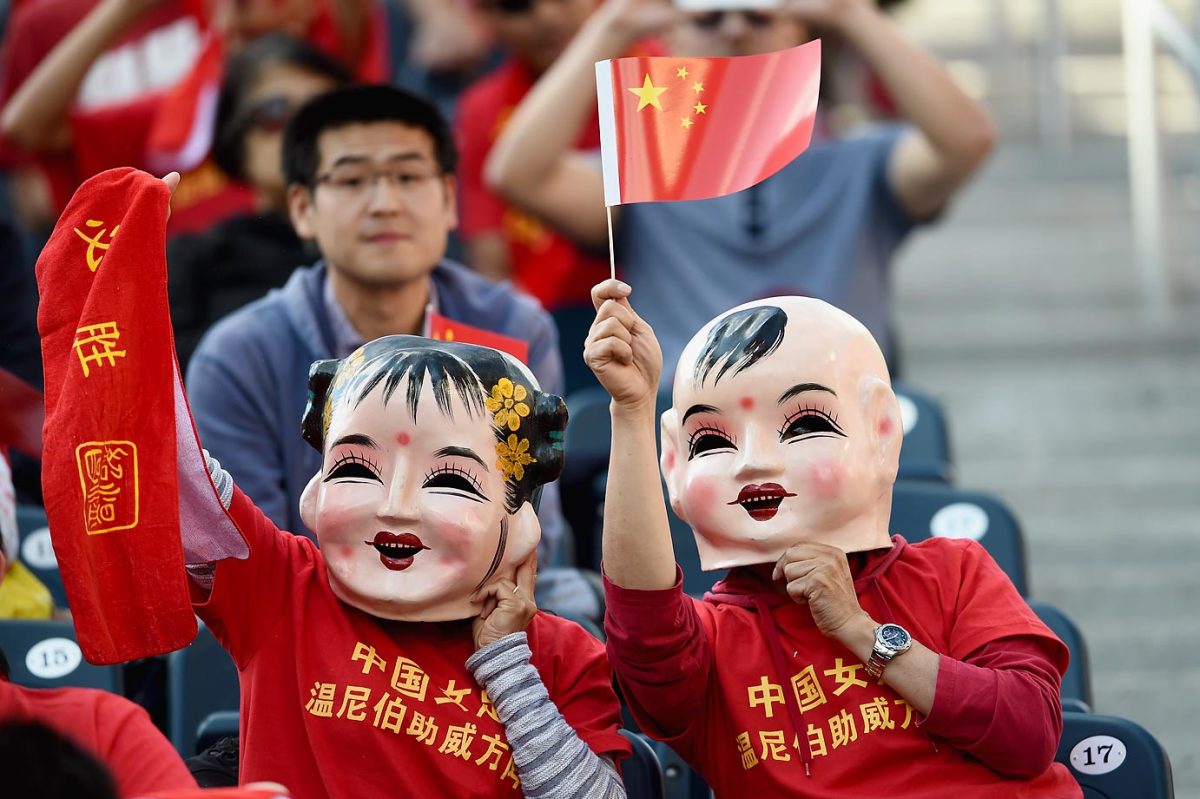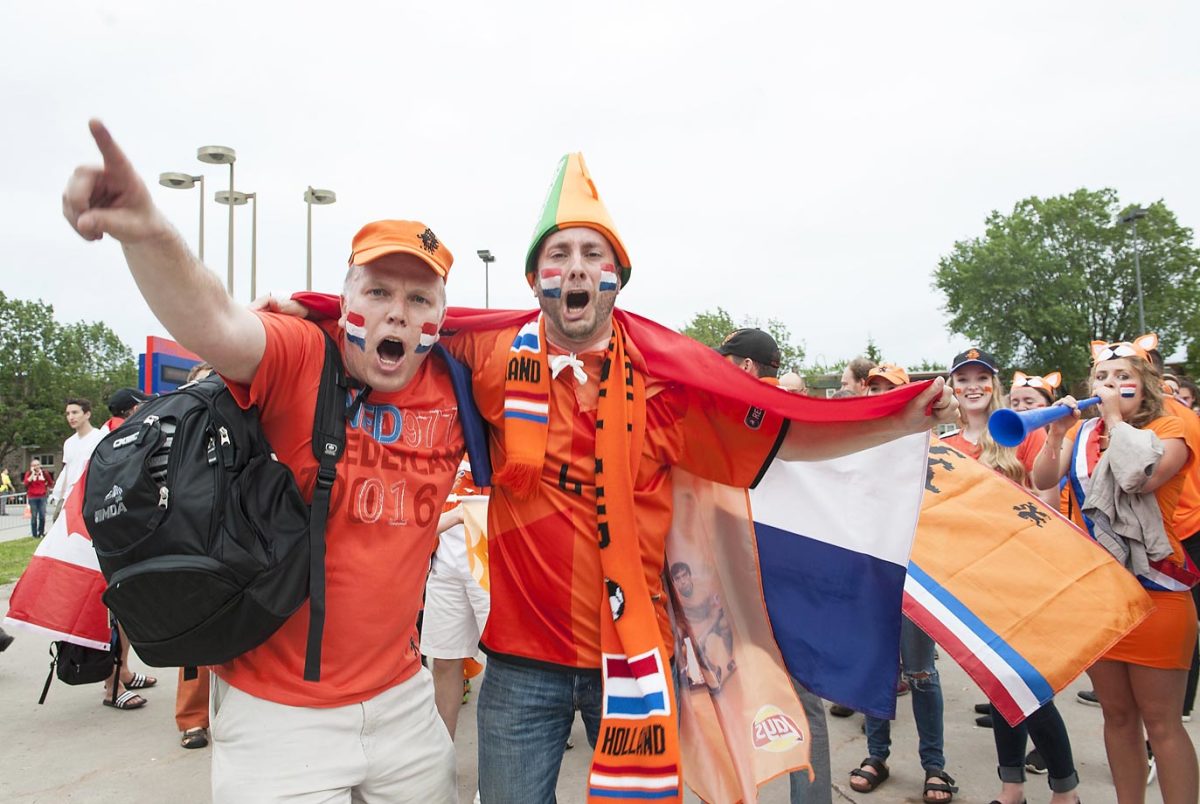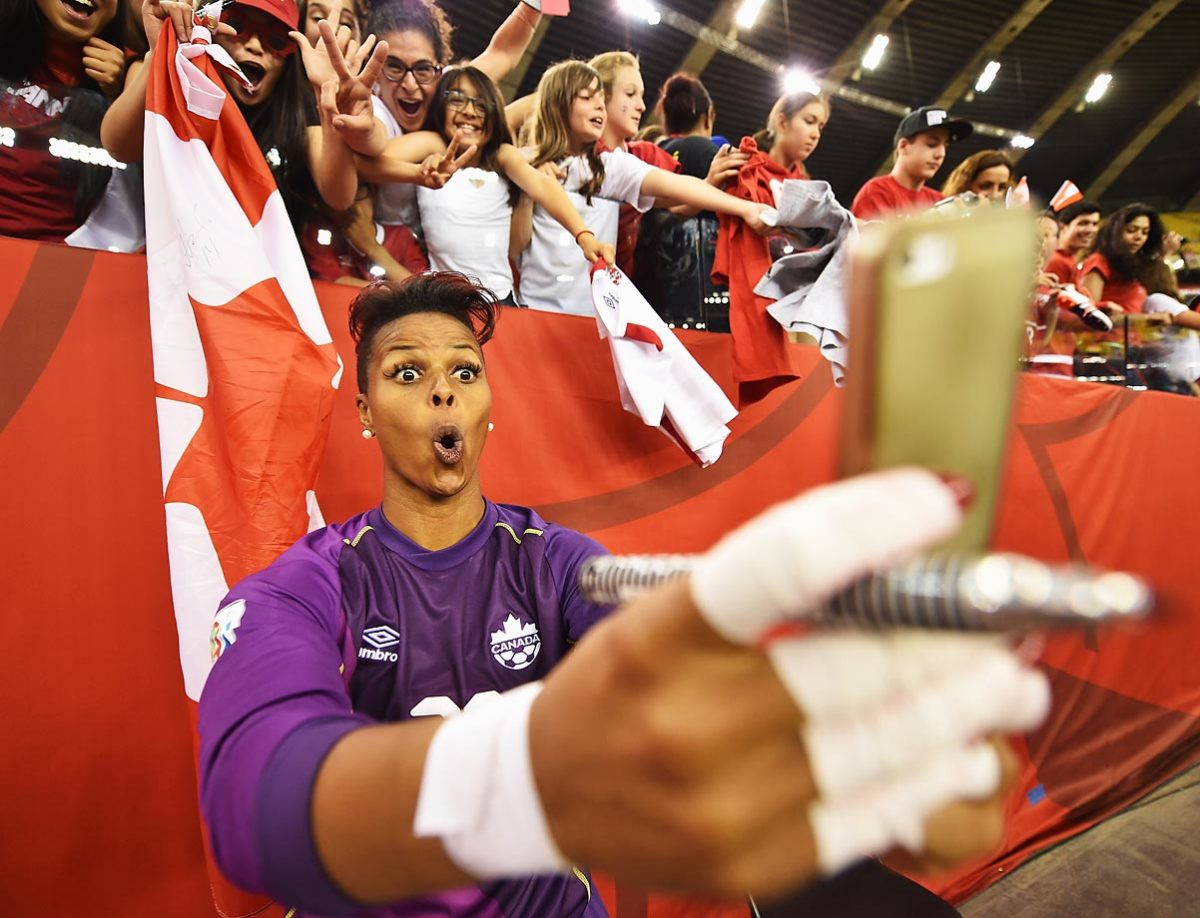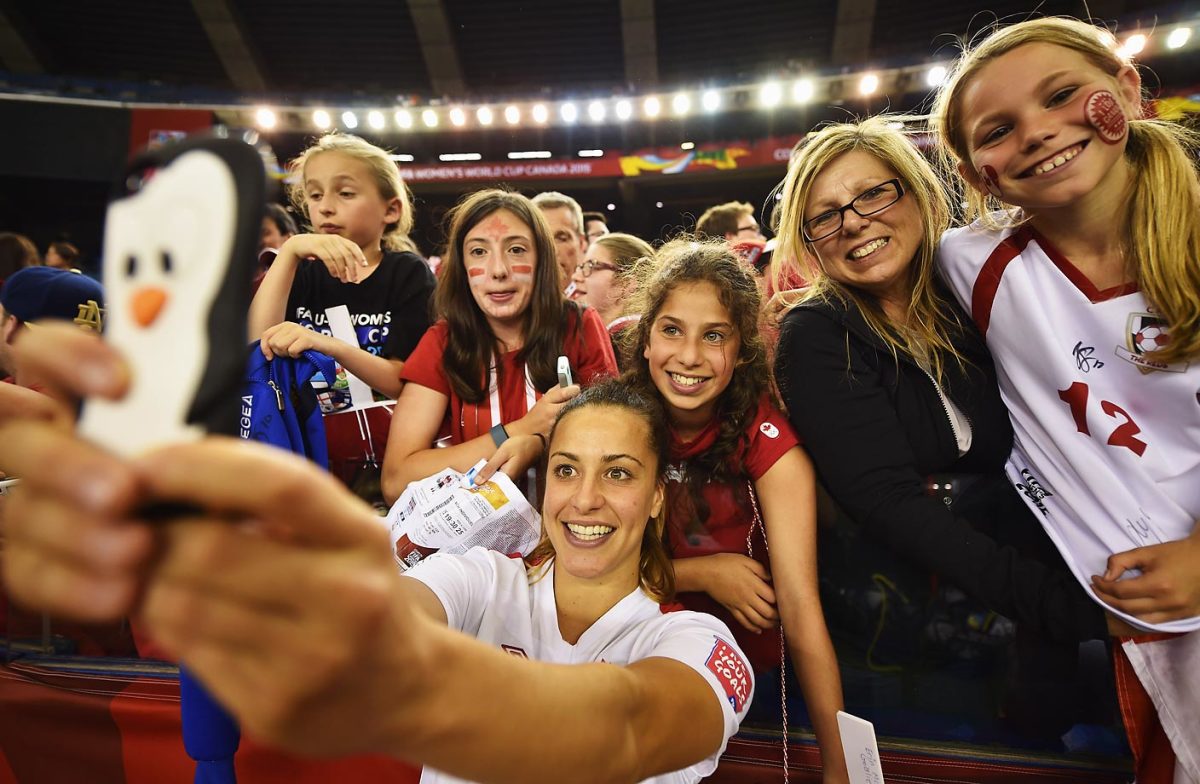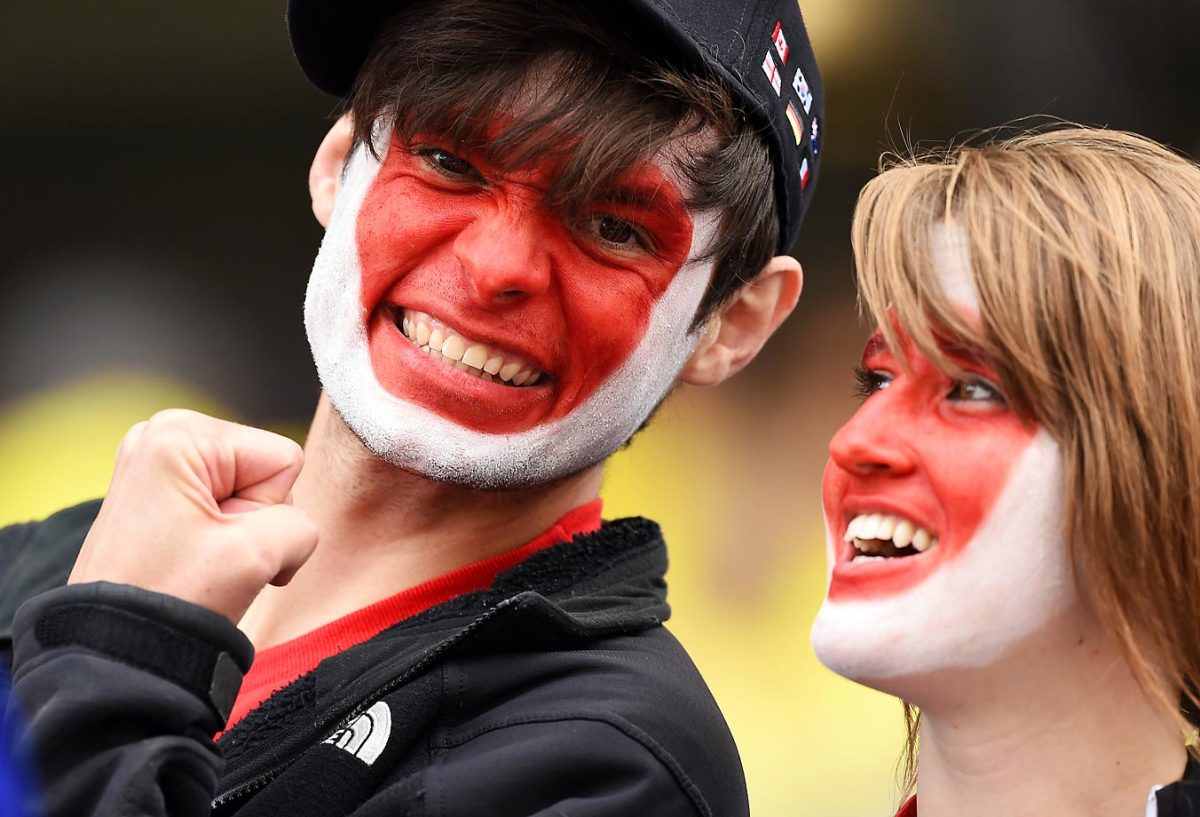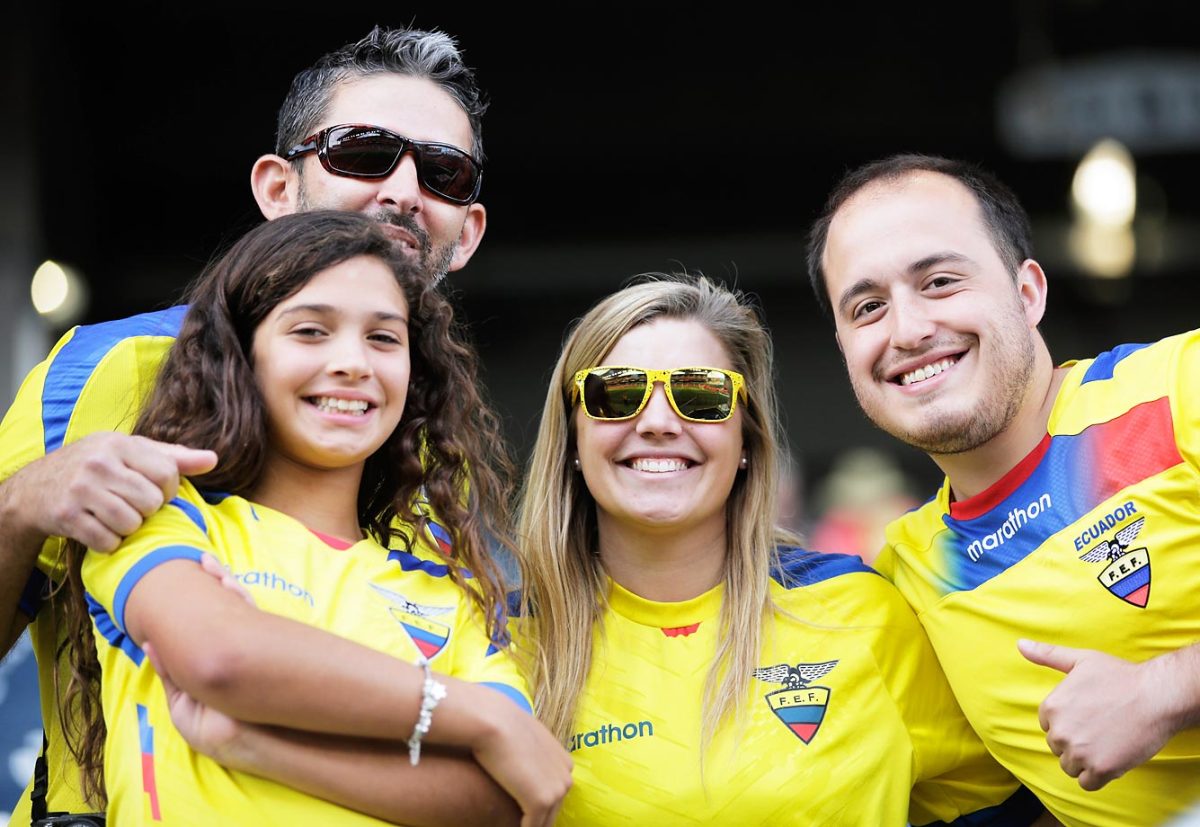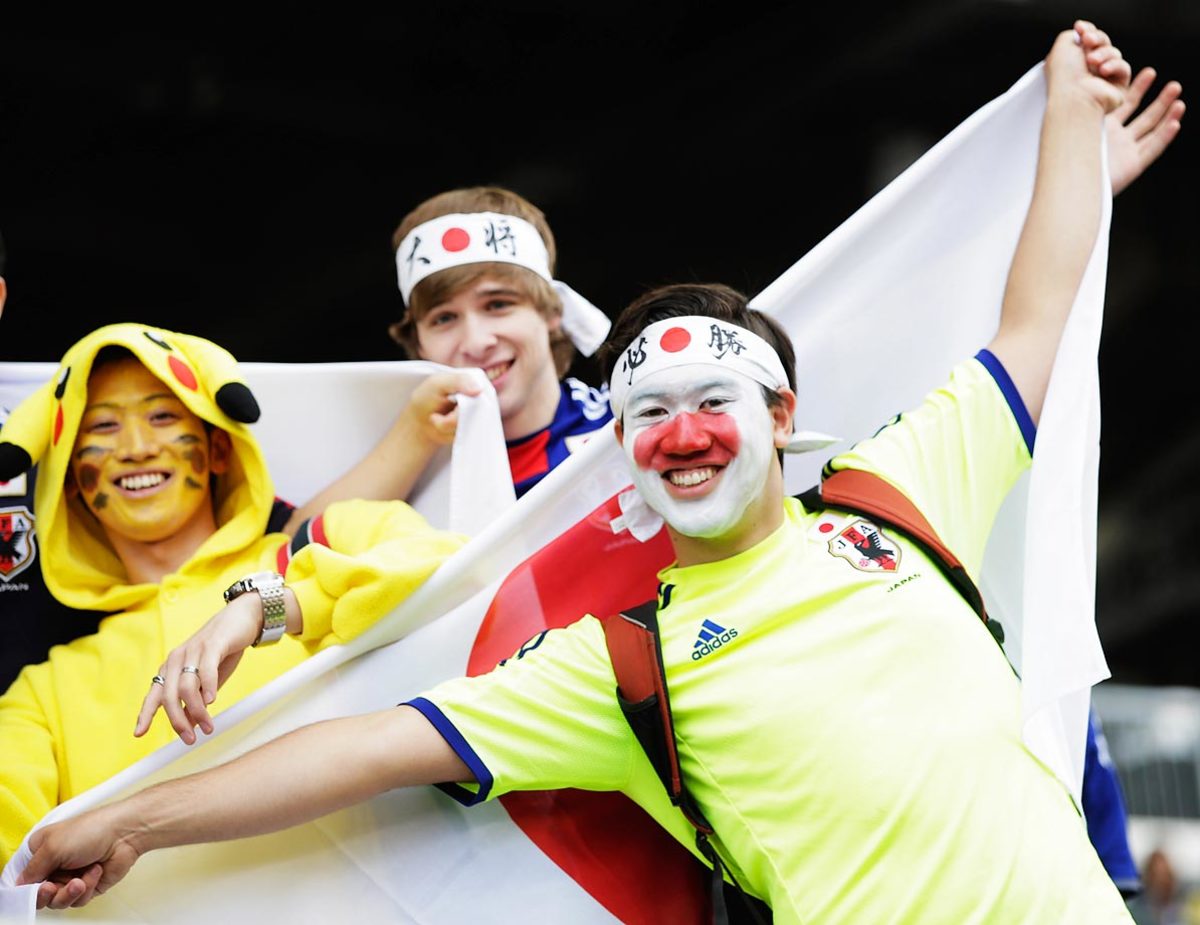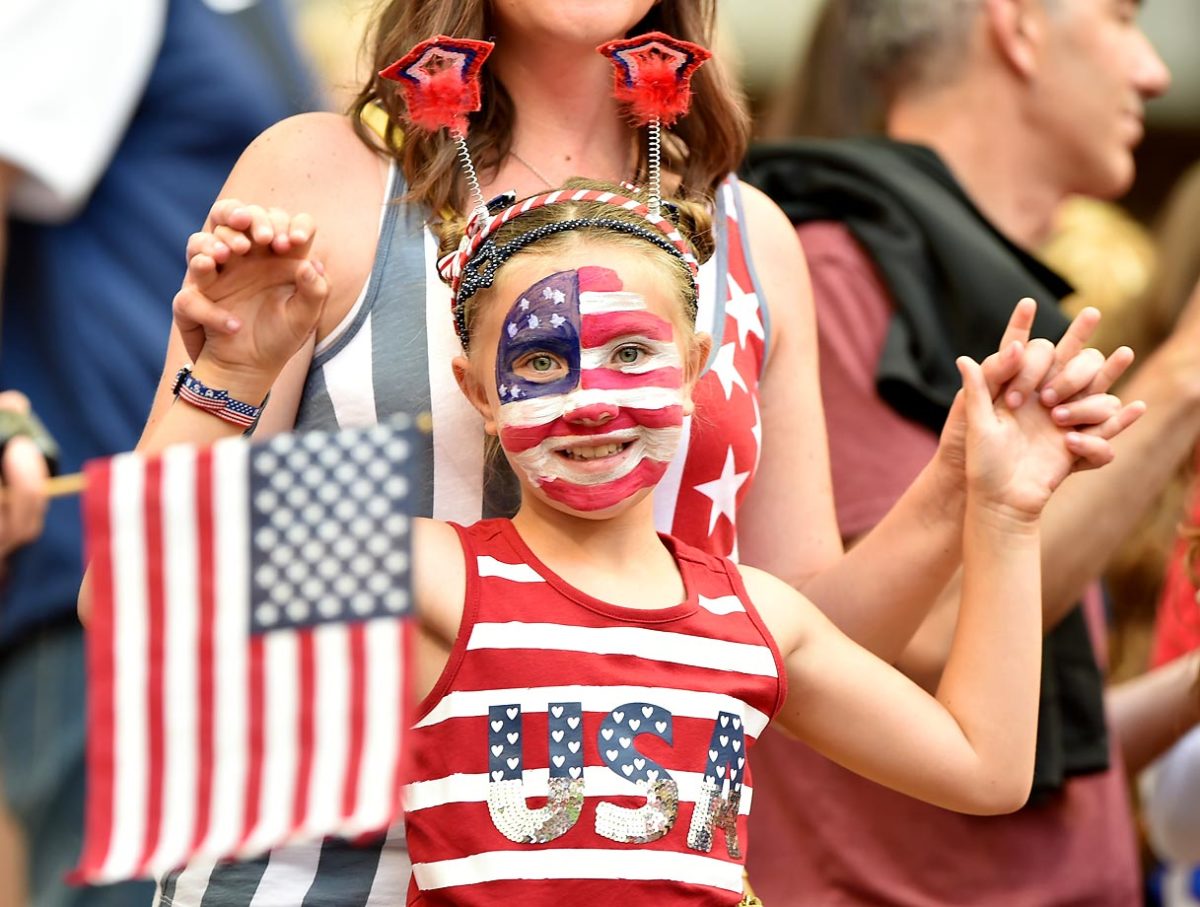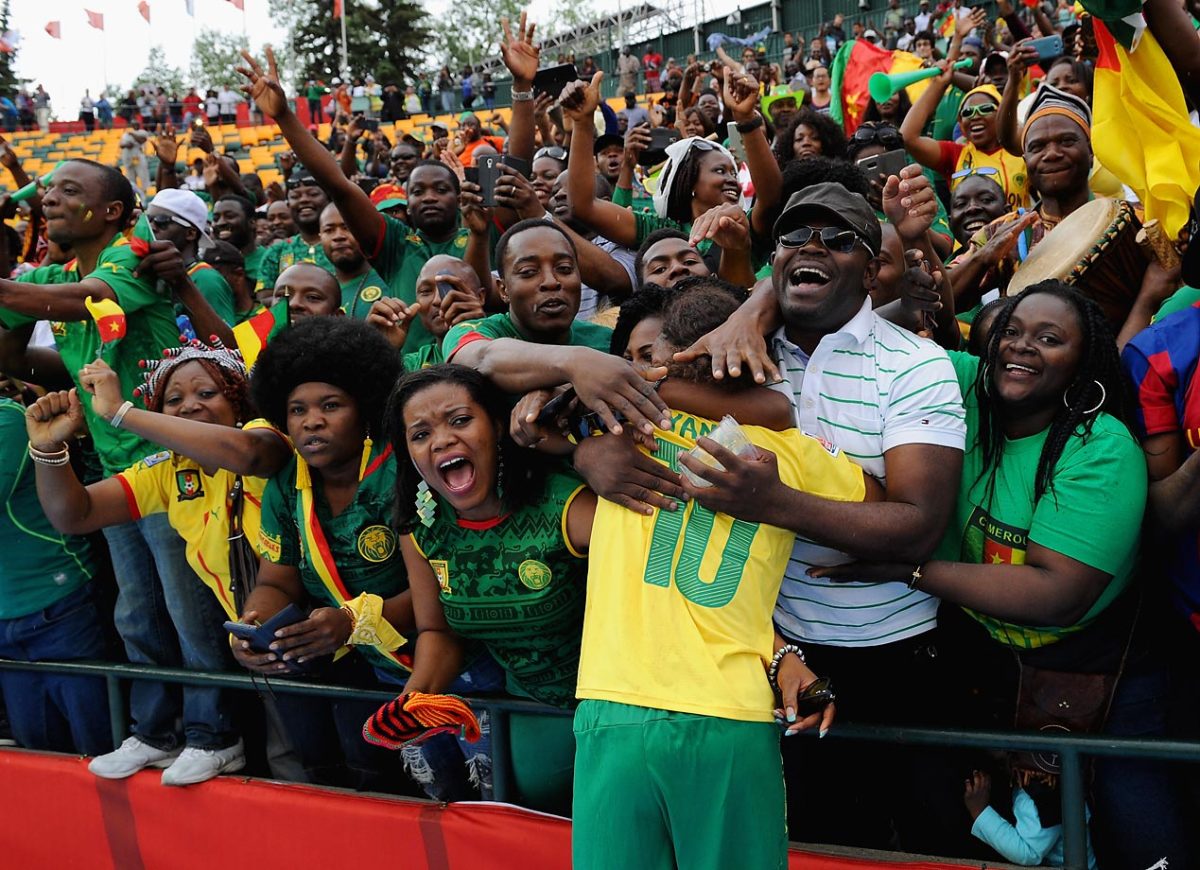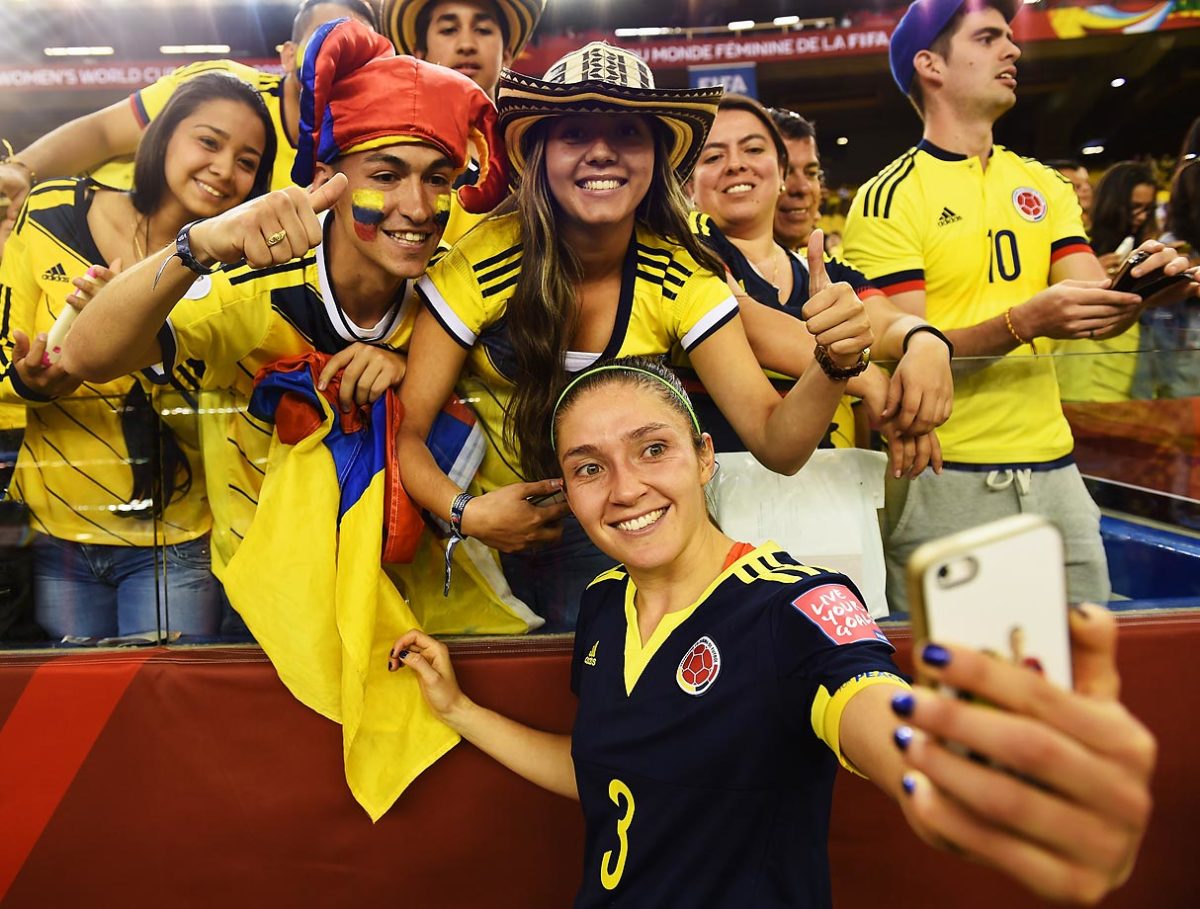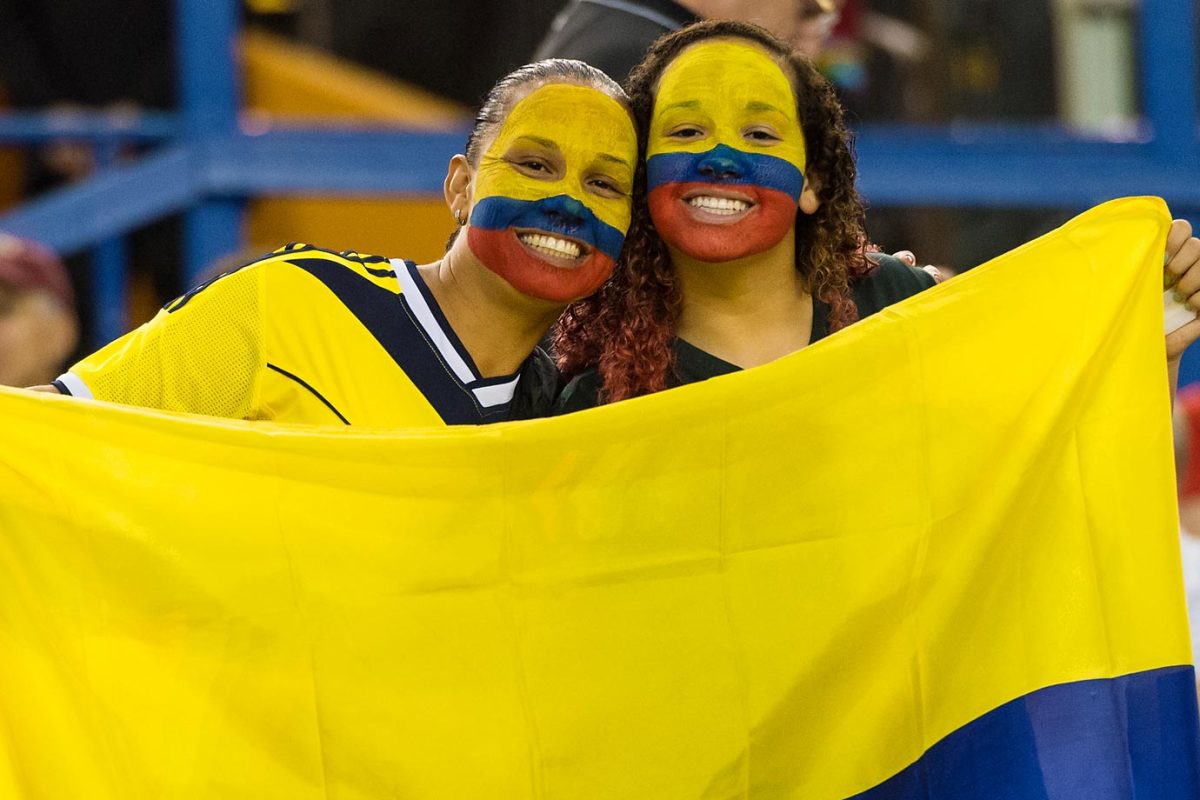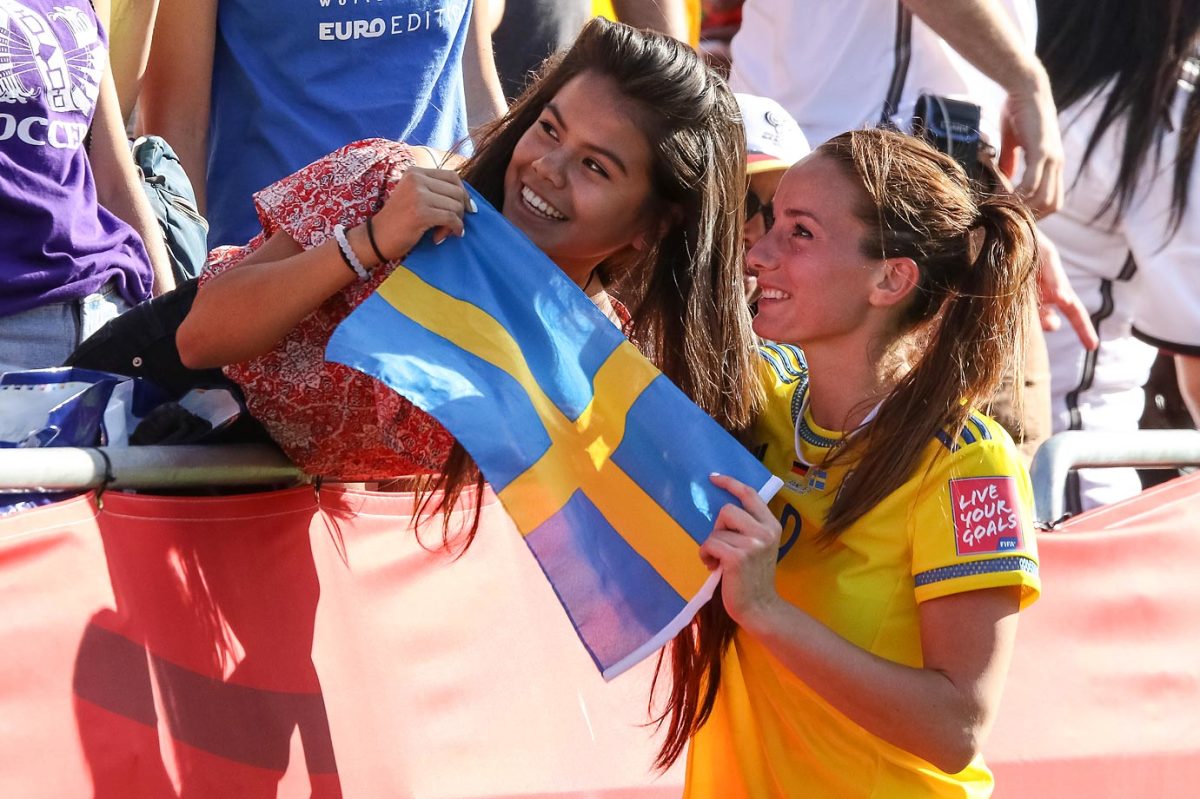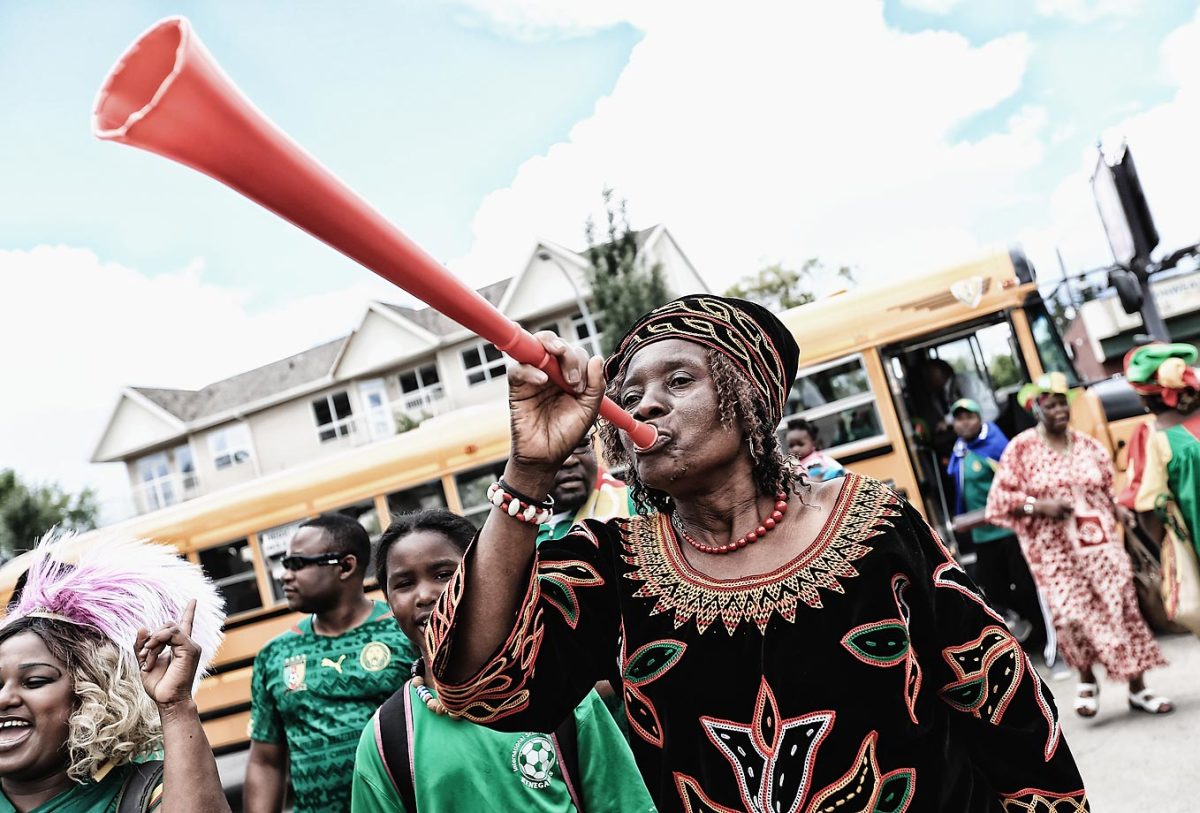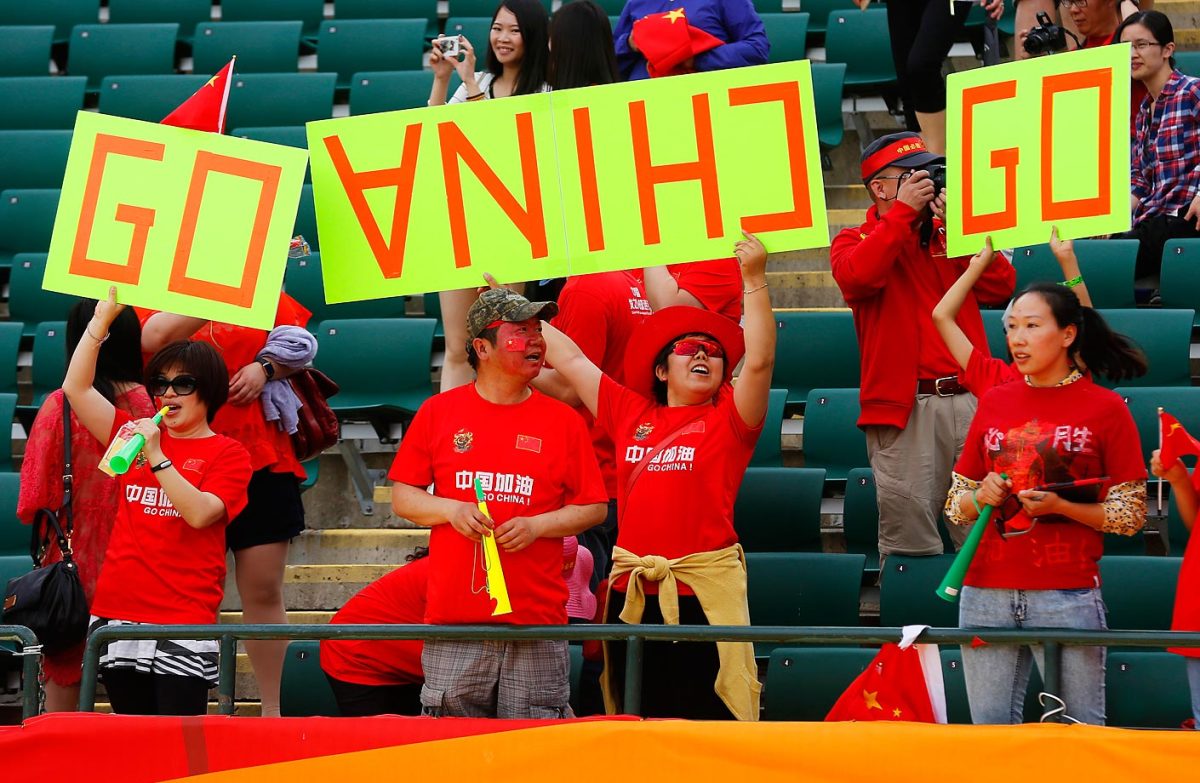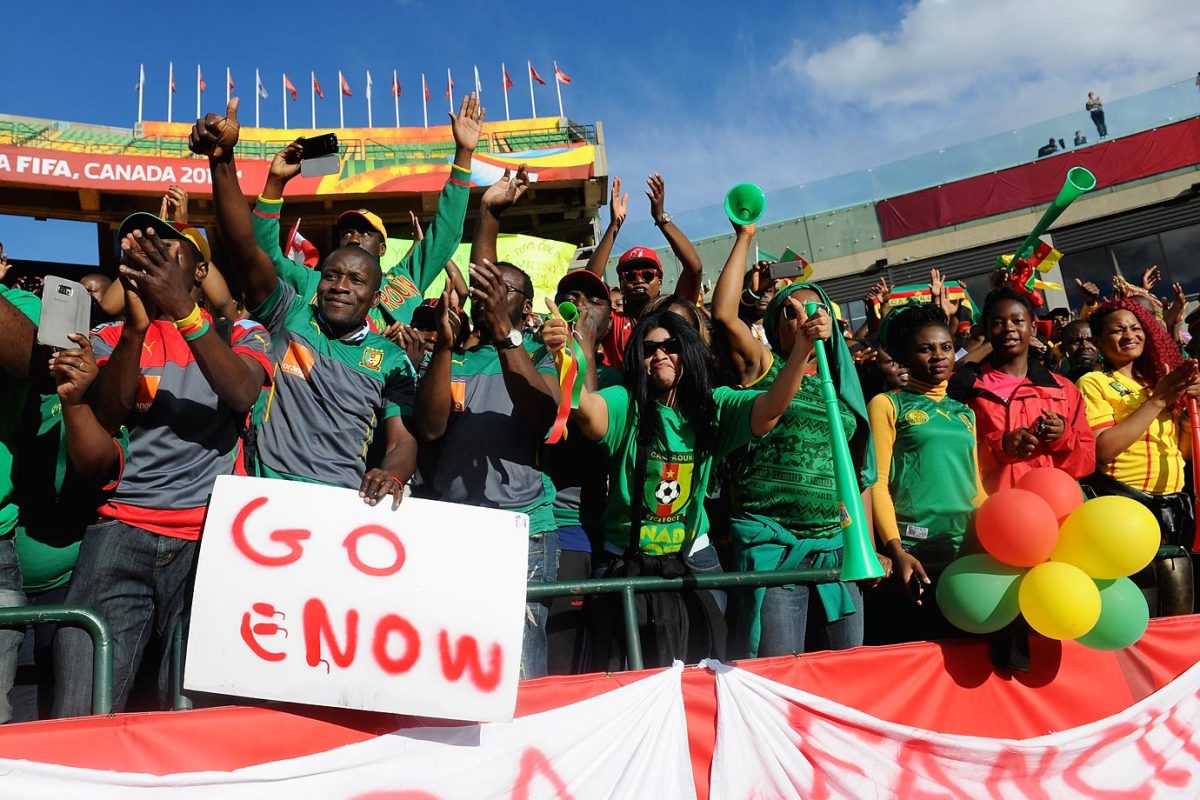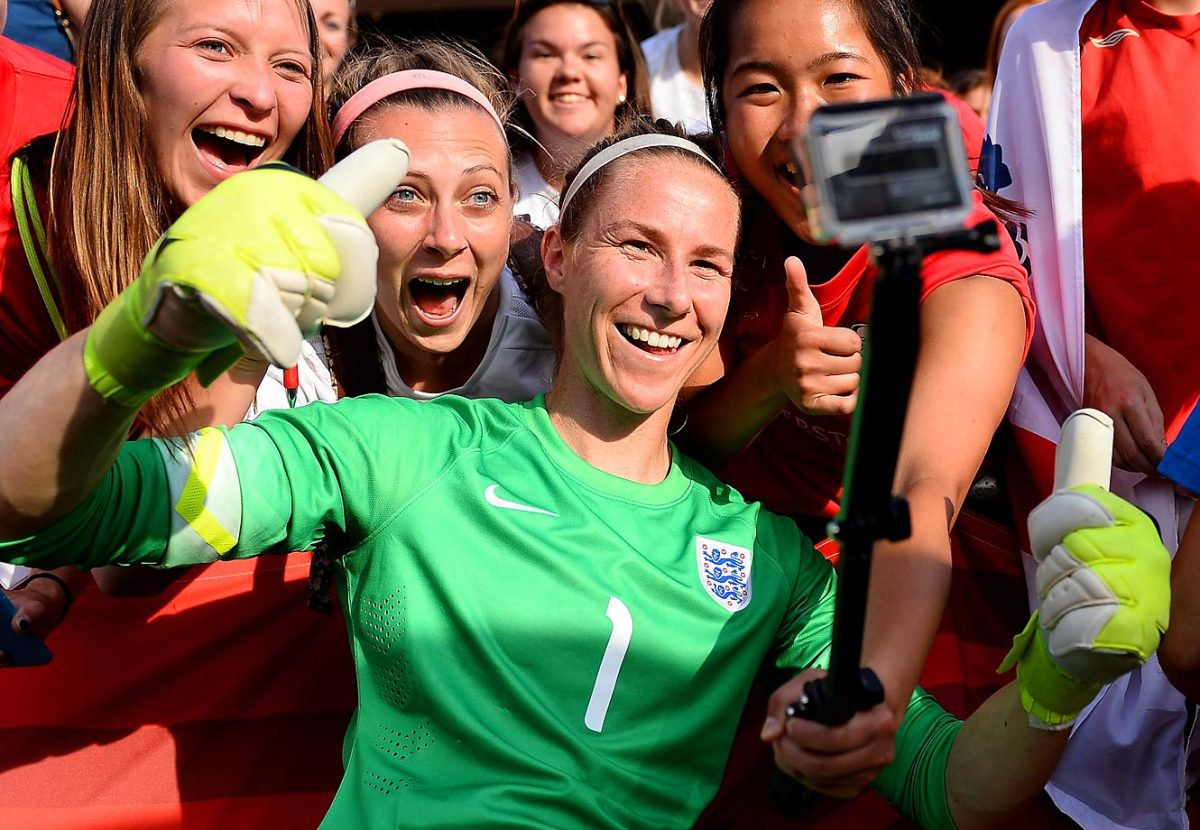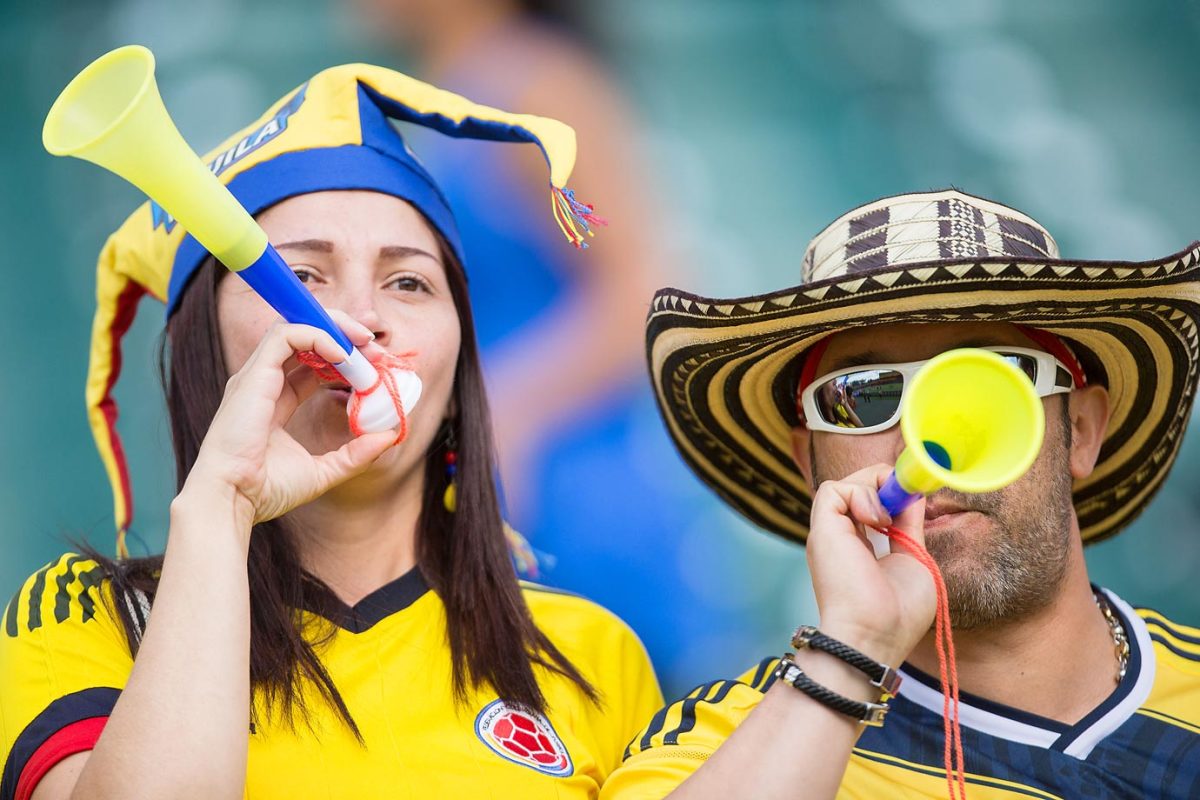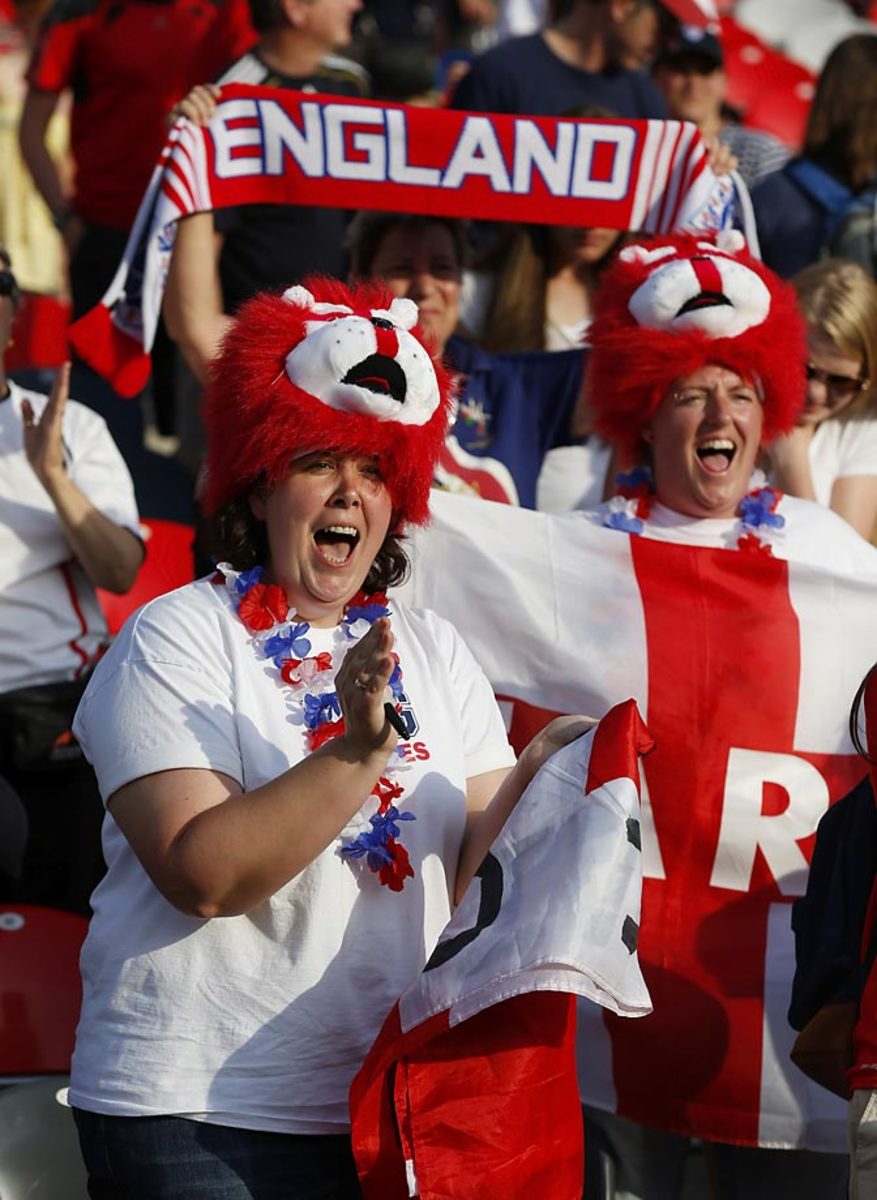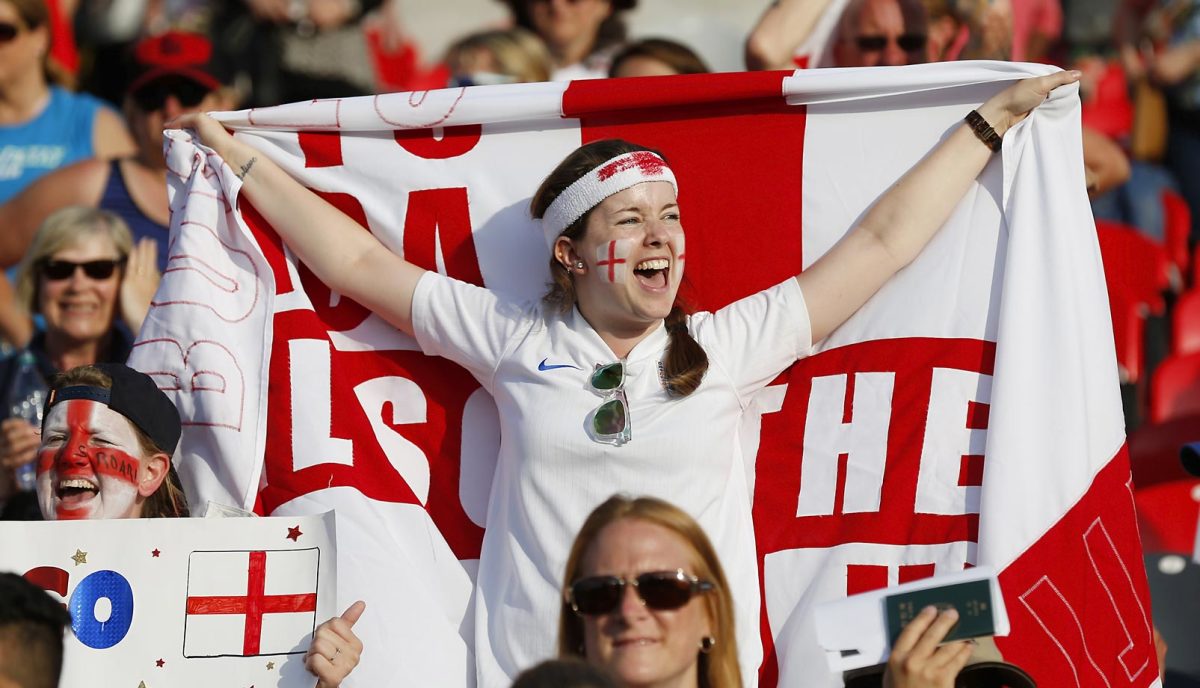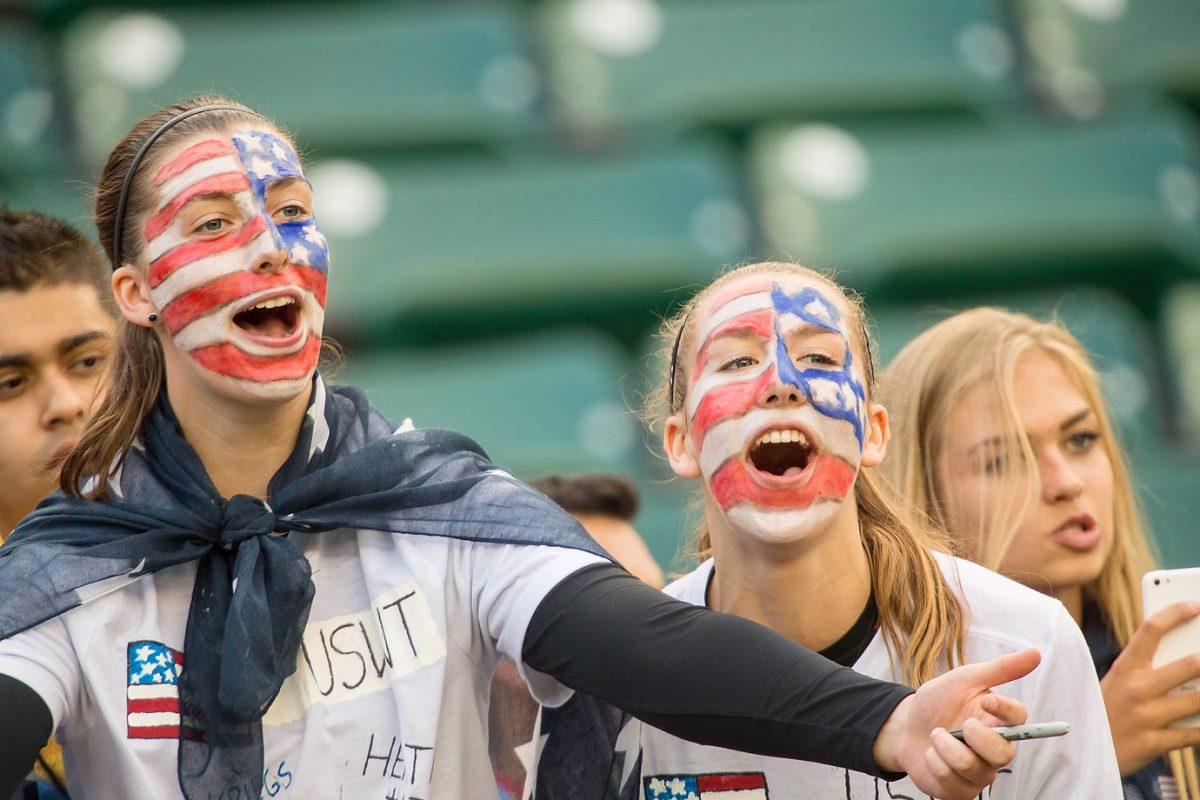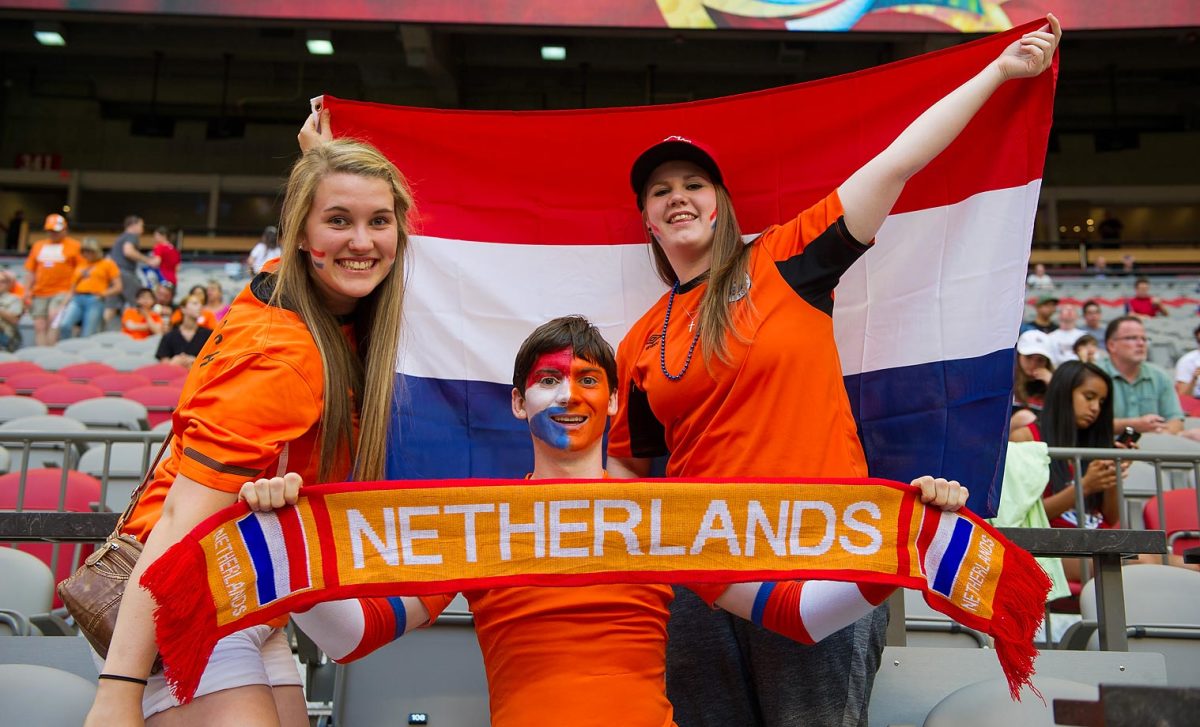As Women's World Cup nears its end, perspective on a month in Canada

The final of the 2015 Women’s World Cup is drawing near and promises to be a tense showdown between Japan and the U.S., two dynastic teams seeking to build upon their previous glories. This tournament has captivated millions and brought tremendous media attention to the women’s game. As it draws to a close, it deserves some soul-searching from those of us that have enjoyed it.
One thing we have learned during the past month is that women’s soccer is inherently political. Many coaches, fans, and players would rather it wasn’t. But national soccer federations and FIFA, along with a good segment of the sports media across the globe, make it so. The inequality in financial support, the lack of respect for players who make this whole thing exist, the overt and implicit sexism, and the indifference of some soccer fans: all this forces players, coaches and advocates to speak out when they would much rather just be focusing on the game.
Player’s voices were louder than they have been in some time. The court case about the turf, launched after FIFA refused to negotiate with players, was the clearest example, but so were the many complaints about FIFA’s decision to organize the tournament in a way that led to Germany, France, and the U.S. being on one side of the bracket. There were also collective actions to protest serious mismanagement, notably the courageous stance by Spain’s players to finally call out their federation and coach.
On the heels of massive protests against the organization of the 2014 World Cup in Brazil and in the midst indictments of top officials on charges of corruption, FIFA offered its critics a political gift through its stubbornness on the turf issue: they had made the most visible thing in every single match a conversation piece about patriarchy and gender inequality.
Upfront and Onside: Dispatches on the 2015 Women's World Cup in Canada
Commentators announced the temperature on the pitch and players doused their cleats with water, and a wave of disbelief resurfaced, wait, why is this being played on turf again? In the end the simplest answer was the right one: sexism. And so, thanks to FIFA, many matches became a never-ending opportunity for feminist pedagogy, a constant teachable moment as we professors would put it. The conversations lit up social media networks during and after matches.
It allowed critics to engage with officials in a new way–notably through plenty of sarcasm and satire–but also provided a public forum for fans to relish in debate and admiration for their favorite players.
The politics were inevitable in the sad story of the Brazilian team, a brilliant gathering of women who have inspired fans for decades. They were, quite simply, depressed: worn down by the lack of support back home, the absence of fans, and outrageous behavior of their national association. The Brazilian coordinator for women’s soccer was traveling with the team in Montreal when he suggested that the sport had improved because athletes wore more makeup.
To add to the indignity, Brazil competed directly with attention from the men’s squad because the South American confederation scheduled the Copa America during the Women’s World Cup. Their disconnect on the pitch was hard to watch, but harder still was realizing that this is what it looks like when brilliant and talented players are marginalized and not given what they need to thrive.
USA finds inspiration in Supreme Court ruling for WWC win over China
A different energy surrounded the U.S. side, especially during its last two games, buoyed as it was by the Supreme Court’s historic ruling on Gay Marriage.
This was an issue that has been important to a number of players on the team, most notably Abby Wambach and Megan Rapinoe, who have been a consistent voice in favor of gay rights. The decision took place on the day of the game against China.
Sydney Leroux tweeted out this delightful picture in celebration, and players noted that it inspired them during the game that day. Though we never got to see the goal-celebration that was planned in honor of the decision–though there may still be a chance on Sunday–this is one of those cases where what happened off the pitch probably shaped what happened on it. There is a sense in which the team could feel supported, quite literally, by our nation and national institutions in a new way.
Though we still have the final to look forward to, the U.S.-Germany game on Tuesday night felt like a kind of climax, the culmination of a remarkable few weeks of playing and debate. We were both there, sitting in different parts of the stadium and left feeling deeply lucky to have been witnesses to what turned out to be a remarkable, luminous evening.
USWNT peaking at right time, ousts Germany to reach World Cup final
There is nothing quite like the crowd at a World Cup match. These games give us a chance to enact and live out an affiliation with our nation in a particularly joyful, convivial way. These events provide us with a powerful, immediate and palpable sense that we can actually feel our nation–it is there, on the pitch, 11 players. It is the closest many of us get to actually seeing our nation, to seeing the actions of a group make history in front of our eyes.
That it is all purely symbolic is precisely the point: nationalism is all about symbols. This doesn’t lessen its power, and indeed it is the secret to it. And when the nation is represented by women, notably in the athletic realm, there is the potential for something new, something transformative, to happen. Traditionally, sports’s associations conceived of themselves as extensions of military organizations. For women to embody a competitive and physical national identity challenges far-reaching stereotypes.
There are always many Americas, struggling with and against each other. What America was there in the stadium at Montreal?
There was, first of all, the sound, a different kind of sound than at most soccer matches we’ve been to. It was the sound of voices of many different ages, of children and elders, but most of all of men and women, boys and girls. There was, as we all looked at each other, a sense of delight and perhaps a bit of surprise, too. After all, when was the last time such a crowd had gathered for this kind of game?
SI Vault: Out Of This World – How the U.S. women won the 1999 World Cup
It was hard not to reach for the famous example of the 1999 Women’s World Cup played in the United States, and particularly of the final in the Rose Bowl. This crowd wasn’t as big as that one, but it filled Montreal’s Olympic Stadium–no small feat. Having been at the France-Germany game, where the entire top tier of the stadium was empty, our hearts leapt a little to see, up there, way up at the very top–the seats mostly full, the heights occupied, the sound of song & chanting coming down from above.
What America was this? It was an America on the road, with many having just driven up from points south that day, crossing the border by car, making their way to Montreal. We were all talking to each other, in the subway, on the way to the stadium, outside, waiting in line for food: “Where are you from?” Three women from California traveling together, an older girls’ soccer coach and referee from Iowa who told me tales of the going to 1995 World Cup in Sweden, high-schoolers and college students. Some had been on the road going from one game to another, but for many this was the first and only they would attend.
A mother and a 10-year-old daughter, marching through the tunnel from the subway, the mom smiling and saying, “I really can’t believe we’re here. We made it.” Which was, in a way, the feeling that infused everyone, perhaps a little bit the team too.
History, other factors if USA, Japan go to PKs again in World Cup final
There were moments of humor and misunderstanding as the U.S. fans confronted Montreal’s francophone culture. When Carli Lloyd scored her penalty kick, some U.S. fans were taken aback when the giant screen, after announcing “GOAL,” was followed by the word “BUT,” as if someone was about to take it all back. Some of the many French-speaking supporters of the U.S. team reassured them: this is just how you say “goal” in French!
Later, with the U.S. winning and the minutes ticking down, a group of fans burst into the French national anthem, “La Marseillaise,” which had swept through the stadium many times during the France-Germany quarterfinal. It wasn’t out of place: after all, it ultimately took a Franco-American collaboration to defeat Germany. France had worn them down, left them tired and with a few yellow cards, so lending a vital hand to the U.S. The way it worked out, fans of France and the U.S. could feel somewhat united rather than rivals, at least until the next time those two teams face off.
The lines were terribly long for the women’s bathrooms, not so bad for the men’s, so in a small revolutionary act women occupied one of the men’s room, using the stalls, and everyone went along happily. Some men even scouted for women in the lines, ducking their head’s into the restroom and shouting, “all clear!”
What America was there in Montreal? Some in the crowd had come ready to celebrate the Supreme Court’s decision on marriage equality as they rooted for the team. One fan was draped in an American flag with the white stars on the blue background but the bars in the color of a rainbow. People kept wanting to take a picture of her, or with her, and she happily obliged. Later, in the stands, one woman held up a sign: “Rapinoe Marry Me–In all 50 States!”
This was an America that saw itself reflected in the players of the U.S. women’s team. The spectrum of experiences and styles is remarkable, from the polished and heavily promoted image of Alex Morgan to the more complicated and controversial figure of Hope Solo. Their names, and those of many other players, were on the backs of many fans, men and women, and there were many signs calling out encouragement and love to the players. There was plenty of cleverness to go around: “Who needs Sauerkraut when you’ve got Sauerbrunn?”
U.S. women endure roller-coaster ride in semifinal win over Germany
People had come bearing their own stories, symbols of their communities. A Native American man waved a U.S. flag decorated with an Apache figure. A man in his 50s had driven up by himself from Wisconsin, and he kept high-fiving everyone around, finding himself in the middle of a circle of new friends by the end of the match. Mona Eltahawy, feminist activist and writer, learned to love the “I Believe!” chant.
Many young women had come with their teams, wearing their own club jerseys, looking on with a mix of admiration and ambition. Young girls lined the stands, leaning down and high-fiving everyone as they walked past, cheering, jubilant, completely at home.
On the pitch, what America was this? It was, you could sense, a confident one, from the first. After kickoff, the ball didn’t leave the U.S. half for a long time, it seemed, but there was something about the way the battles were happening, one-on-one, two-on-one, sometimes one-on-two or three. At one point, about 20 minutes in, Klingenberg out-dribbled and out-moved Celia Sasic, and suddenly it was clear: the U.S. might well win this.
The reputation of U.S. soccer (a stereotype, of course, as such claims always are) is often that it is physical and well-organized, solid and athletic, but never quite as technically strong as that of players notably from rivals in Europe. But in the individual duels the U.S. won over and over, not always, but consistently enough. Rapinoe was tireless and brilliant. Out of a tangle of players, the ball would streak out to a perfectly positioned teammate. The team just kept creating its own space, its own openings, that mastery that turns the pitch into a space of possibility.
Germany goalkeeper Nadine Angerer clearly saw the danger posed by the U.S.. When Germany is playing, a choice seat is behind the its goal. What you miss watching on television is Angerer’s ability to impact play far beyond the goal, she’s pacing, she’s yelling, she’s strategizing. Angerer’s frenetic activity from the beginning of the match showed she understood she needed to strengthen and motivate her team from the back.
In the stadium, a few lonely German fish stood out in the sea of U.S. fans. In the front row was an older German couple, with a big draped flag over the edge, and nearby two girls, maybe 10, sisters probably, with Germany hats. When the game began, the man in front kept turning around, looking at the crowd, smiling and gesturing when things went well for Germany, a little provocative. There was dread at the thought that, as the game went on, he would just get more and more delighted, more and more confident, turning and yelling more and more, while we all had to watch and accept that yes, he was right, of course Germany is absolutely the best, unbeatable, inevitable.
We needed the team to make it so we didn’t have to go through that. In another soccer setting this would have been a point of tension: we would have been worried about what would happen to this man, an isolated fan still bent on standing his ground. Not there, though. After all, right next to him were two little girls with red-white-and-blue braided hair. A jovial family behind him kept politely moving to one side or another so they could see past his large German flag. And, thankfully, the U.S. team took care of the problem. As time went on, he stood up less and less. The rest of us stood up more and more. He was concerned, we were confident.
We could sense there was something going on down on the pitch, a paced serenity about the U.S. team. A kind of seriousness, but also a quiet pleasure in the small victories that began to pile up, one after another.
We were lucky too, which is often the only way you ever win in soccer at this level. The penalty against the U.S. could have come with a red card instead of a yellow, and the one against Germany was basically a mistake since it seems clear it was actually out of the box. It was another painful reminder of FIFA’s failure to develop and successfully evaluate female referees, though of course such mistaken calls are endemic to soccer, and part of what makes it the focus of such intensity and passion anyway. It was also something to recall the next time someone claims that (foreign) referees always have it out for the U.S.
When Sasic stepped up to take her penalty kick one of us (Laurent) couldn’t even watch. I was sitting, my head in my hands, surrounded by standing bodies. I was waiting for the roar of the crowd to suddenly stop, for the sickening silence to take hold, replaced by shouts from our German friends.
I remembered the feeling vividly from watching Ghana-Uruguay in 2010, when the sound of defeat was the sound of air rushing out of the stadium, disbelief. But instead of that, I heard a roar, the beginning of chants of "USA, USA!" and I couldn’t believe it.
Podcast: Bassett's own goal, USWNT-Japan World Cup final; MLS Year 1
That was the turning point. Almost like scoring a goal. There was something perfect about that strange moment of Hope Solo wandering off down the pitch, as if she might just decide to walk off the pitch and go home, and then turning and coming back. None of it made any sense: German players don’t miss penalties, and Sasic most certainly doesn’t. But she did.
And Lloyd. Her eyes focused, bearing down on the ball, in a crouch, for what seemed like forever. The net billowing. And the second goal, such a playful one, after the forward run of Wambach on the left, then back, then triangulating forward, the geometry and pace of it, as if everything had been perfectly planned.
That’s the way a lot of things seem in retrospect. It’s a good metaphor for the tournament–political, riveting, punctuated with beautiful surprise.
Laurent Dubois is the author of Soccer Empire: The World Cup and the Future of France (2010), and edits the Soccer Politics blog. His writing has appeared on SI.com as part of the 2014 Roads and Kingdoms series “The Far Post.” He teaches at Duke University and can be followed on Twitter @Soccerpolitics.
Brenda Elsey teaches at Hofstra University, and is currently writing a book with Joshua Nadel, Futbolera: The History of Women and Sports in Latin America. She is also the author of Citizens and Sportsmen: Politics and Futbol in Twentieth Century Chile. She can be followed on Twitter @politicultura.
GALLERY: Fans at the Women's World Cup
Fans at the 2015 Women's World Cup


